We have been in Sicily for a few months now, much longer than planned, and we keep discovering new things. It is not boring a day. Here in the Madonie, the largest nature reserve in Sicily, in addition to the breathtaking nature, there are the most amazing things that we would not have expected. I know few landscapes that are so diverse. On clear days you can see as far as Etna. Here in the small mountain villages of the Madonie, you feel transported to another world. As if time has stood still.
The fascination of the Madonie
We love to drive through the Madonie and stop where it is particularly beautiful. To let ourselves drift without a destination. Just turn right, because the road or rather the way screams for adventure. Thus, a route that GoogleMaps indicates with one hour, quickly becomes a half-day tour. Please always pay attention to the road. Even if the roads at first glance appear very wide and good, the Targa Florio says hello, it can look quite different after the next bend.
You see things that are not in any travel guide, such as a large collapsed bridge. Strolling through the narrow cobblestone streets in one village or another, visiting picturesque churches, hiking a bit here and there and enjoying the beautiful view - that just makes you happy. Not to mention the regional culinary specialties.
There are here the most beautiful medieval villages of Sicily with historic castles, wonderful baroque churches and amphitheaters. You can get there on winding roads following the tracks of the Targa Florio. The intense blue of the Tyrrhenian Sea forms the background. For the Targa Florio we have here reported in a separate blog post.
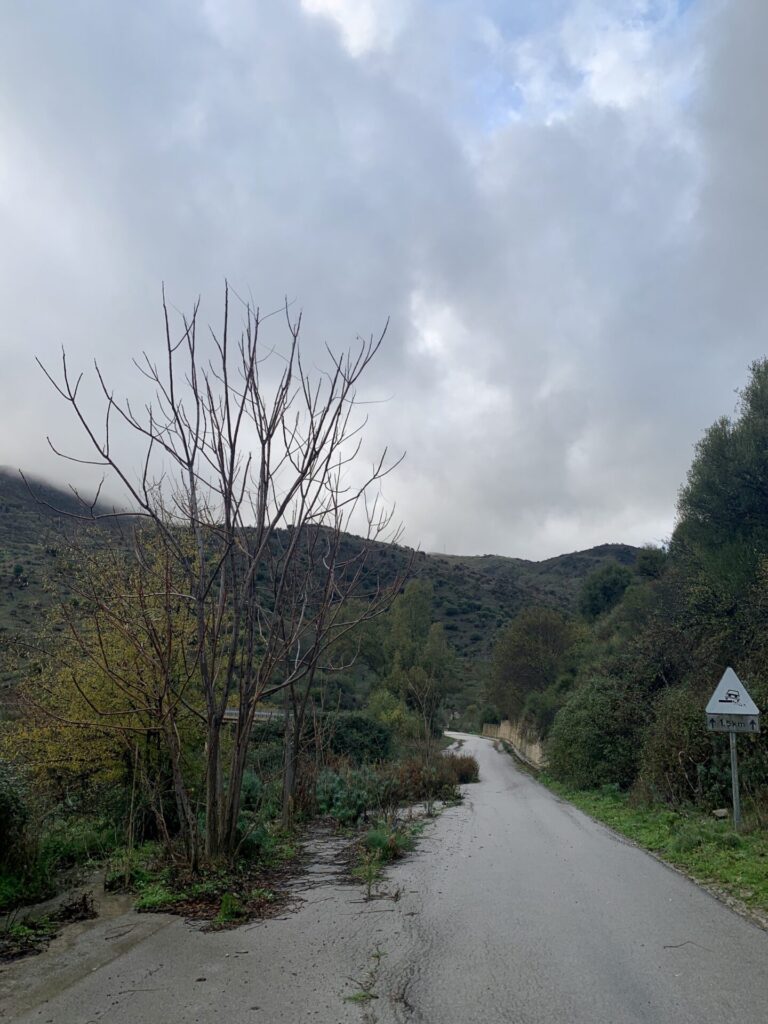
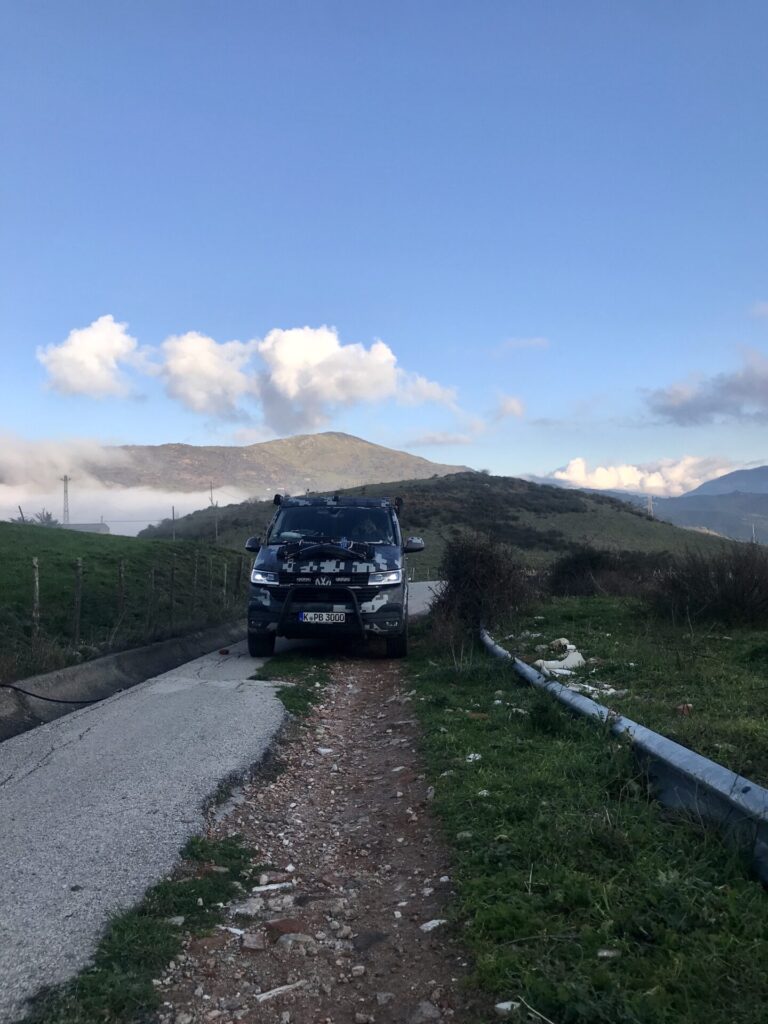

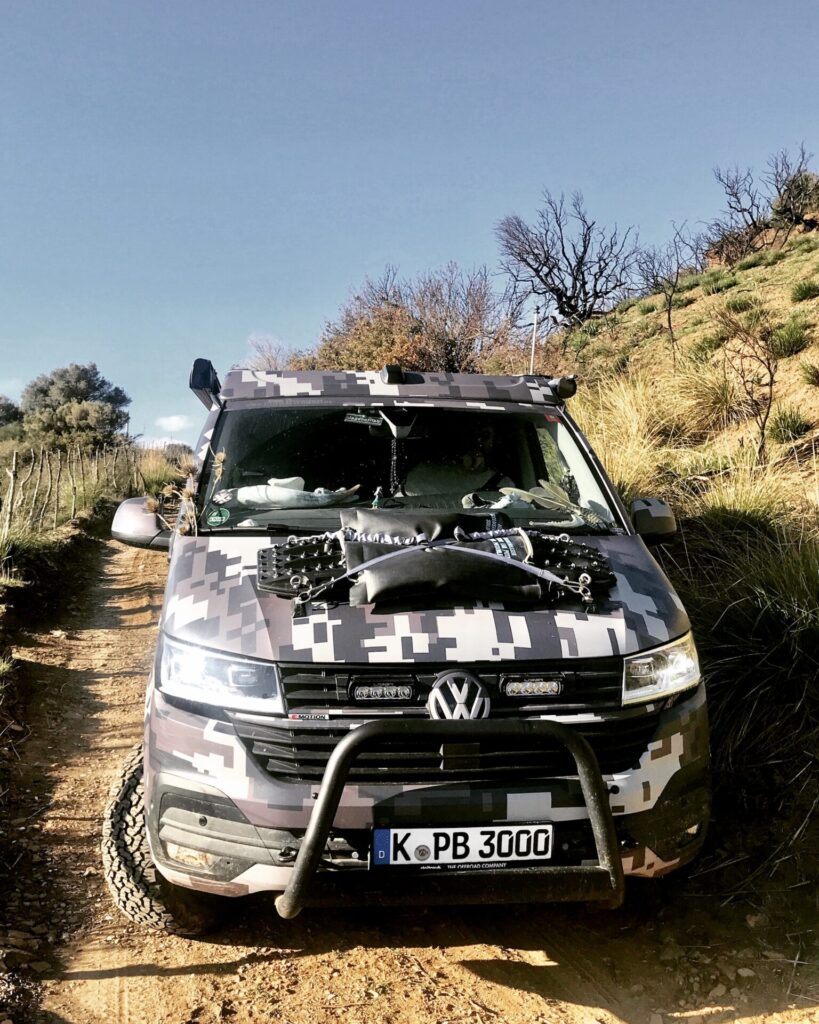
Geography
The Madonie, or the Madonie as it is actually called correctly in German, are a mountain range in the middle of the northern coast of Sicily. They belong to the province of Palermo, the nearest town is my favorite Cefalù. The highest mountain is Pizzo Carbonara with 1979m. It is the highest non-volcanic mountain in Sicily. Since 1989, parts of the Madonie with their 15,000ha of forest are protected as Parco delle Madonie.
Arrival to the Madonie
The fastest way to reach the Madonie is from Palermo on the E90 westbound. After just under an hour, you turn right onto the SP136 and find yourself in the middle of beautiful nature. We recommend, however, to take a little more time and to drive via the SS113 toll-free to Cefalù and, after a stopover there, to drive via the old Strada Provinciale 136. The coastal town of Cefalù with its beautiful old town, the long white sandy beach and the Norman Cathedral, which is part of the UNESO cultural heritage, is definitely worth a visit. We will write more about Cefalù in a separate blog post. Do not forget a jacket, because even if it is nice and warm down on the coast, the temperatures in the mountains are much cooler.
Activities
All year round you can go hiking through the most biodiverse forest of the Mediterranean, over the mountains and through the gorges . Or stroll through the most beautiful villages of Italy and indulge in the regional culinary specialties. This mountain range is used for winter sports in snowy winters and is the drinking water reservoir for Palermo. Where else can you find such breathtaking mountain landscapes, a salt mine, culture, a wide range of sports with zipline, and the sea so close together?
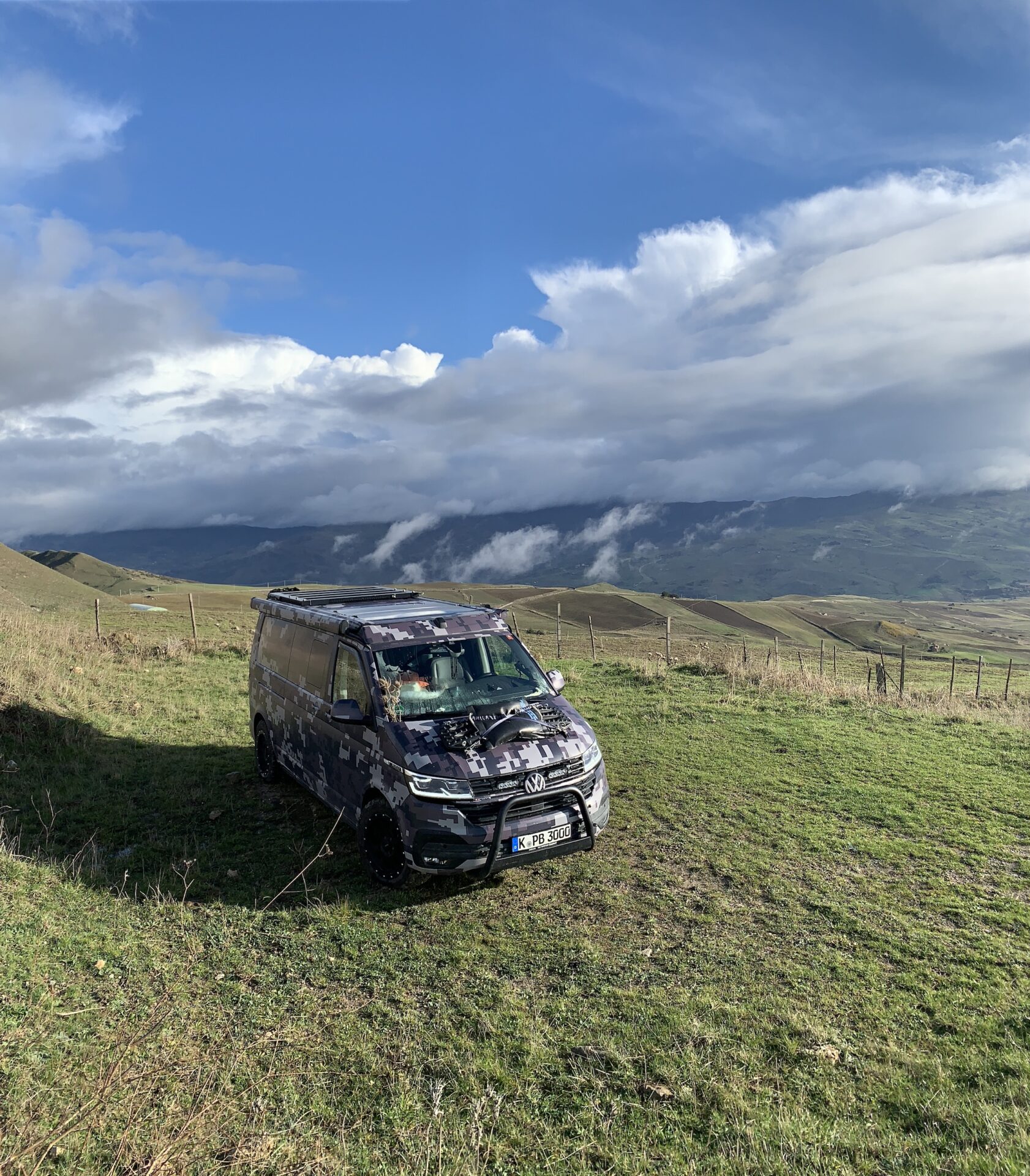
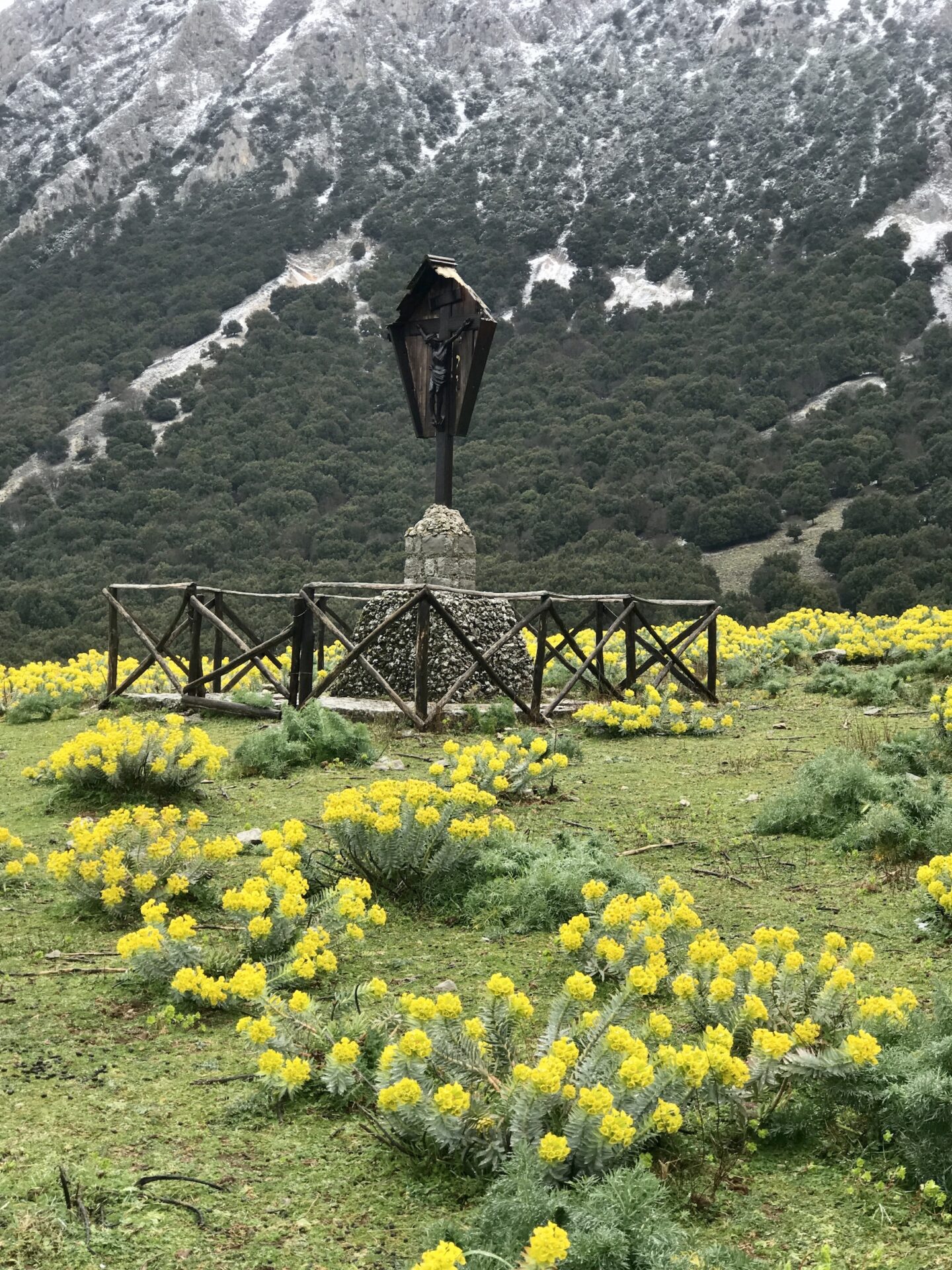

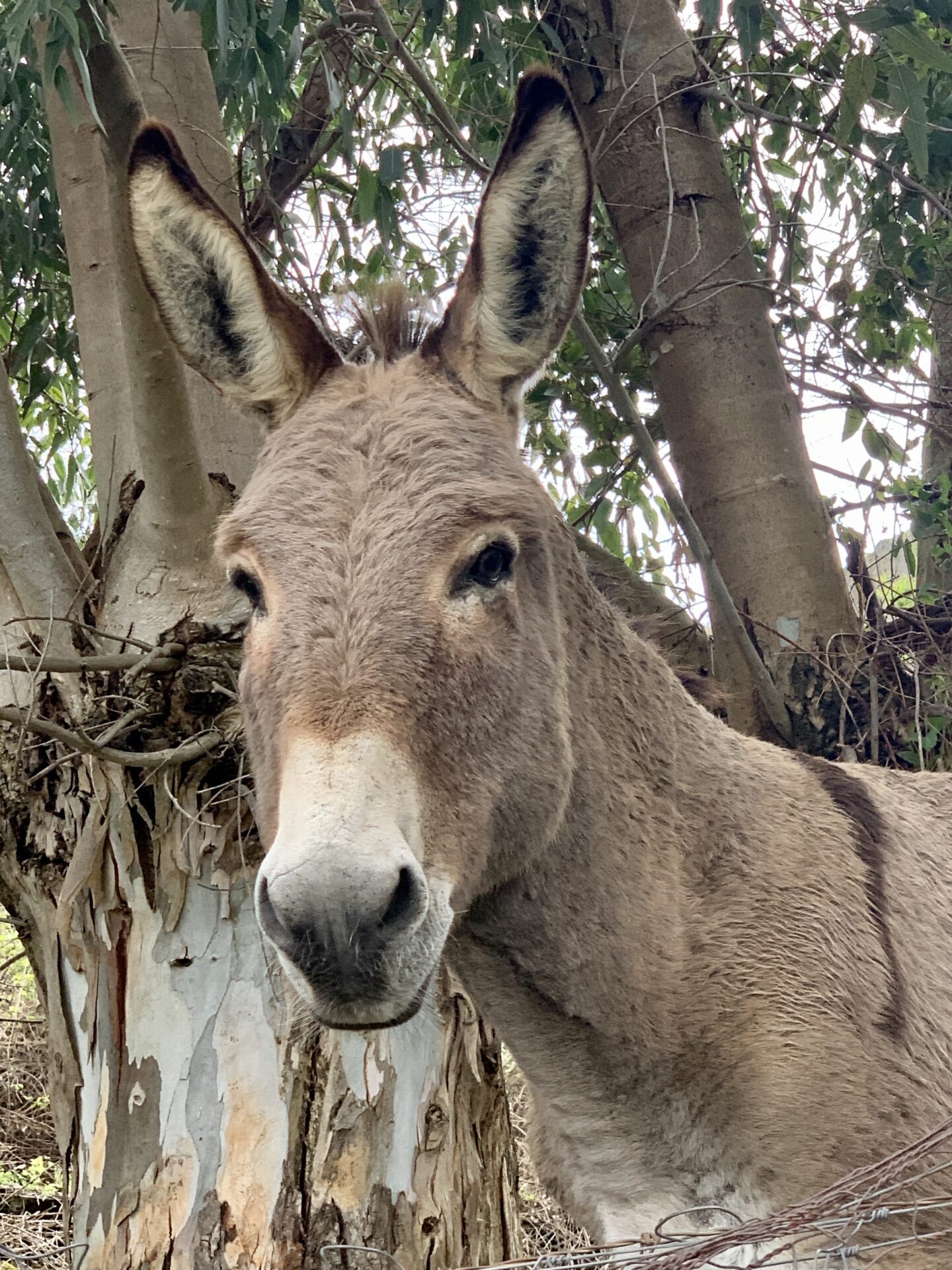
Flora and fauna
The Madonie offers impressive landscapes, huge trees and colorful flowers. The biodiversity is unique due to the geographic location between Europe, Africa and Asia, and because the Madonie extends over an altitude of almost 2000m. The plant diversity includes cork and holm oaks, manna elms and giant holly (Ilex), as well as wild orchids, tulips and violets. During the hikes you always have the incomparable scent of the many wild herbs in your nose.
There's a good chance you'll see sheep, goats, dogs, cows, donkeys, foxes, fallow deer, birds of prey, and maybe even porcupines. We were even lucky and had a visit from a tame fox at our van. Attention: Not so seldom these little animals stand after the next bend, in the middle of the road.
The weather in the Madonie is unpredictable. We have stood in the middle of March in the middle of beautiful blooming tulips at 20 degrees and sun. And the next morning we woke up completely snowed in at 0 degrees. We were lucky. Just a degree or 2 colder and our water tanks would have frozen and burst.
Madonie tourist information
There is in Cefalù, Corso Ruggero 116 a tourist information specifically for the Madonie, which is happy to help with tips and maps. We like to use the app komoot, but somehow I also like to have an oldschool analog map in my hand. That's where the surveyor in me comes through.
The Madonie includes the following villages:
Cefalù, Castelbuono, Collesano, Isnello, Gratteri, Pollina, San Mauro Castelverde, Geraci Siculo, Petralia Sottana, Petralia Soprana, Castellana Sicula, Polizzi Generosa, Caltavuturo, Sclafani Bagni and Scillato.
We will report separately about my favorite place Cefalù.
Santuario di Gibilmanna
Our entry into the Madonie leads from Cefalù to the Marian Sanctuary of Gibilmanna. It is located at the foot of Pizzo Sant'Angelo, about 15 km from Cefalù in the midst of dense vegetation of chestnut, oak and ash trees. On the winding mountain road with countless serpentines you have a spectacular view over Cefalù and the sea. From here you can see once again our steep ascent to the Rocca di Cefalù. On the way we stop again and again, the view over the whole bay is breathtaking. Arriving at the top at about 800m, the church welcomes us with a beautiful chime that we hear again every quarter of an hour. The interior of the church is rather unadorned except for the baroque altar. The square in front of it with the view of the sea is all the more beautiful. We unpack our picnic basket and enjoy it.
To the left of the monastery is the entrance to a short hike up around the monastery.
Gratteri
From Gratteri you have a fantastic view of the sea. This view can be enjoyed during a short hike to the ruins of the Abbey of San Giorgio. The place owes its name to the cave Grotta Grattara.
According to legend, in this Grattara cave lives the Befana, who on the last night of the year descends into the village and fills the children's boots with sweets. Like St. Nicholas with us.
Parking is possible a little below this cave. Then it goes on foot via a well-built, but steep climb to the cave.
Isnello
We continue to Isnello. Those who like to visit churches are in the right place here, because Isnello has 11 churches. This high number of churches per inhabitant is not because the people here are particularly devout. But because they are becoming fewer and fewer inhabitants. This small picturesque mountain village had 4500 inhabitants around 1900, today unfortunately only 1500. At the entrance to the village we are greeted by the statue Madre Madonita. It is worthwhile to go up a few steps to the Ruderi del Castello di Isnello or to the statue 'Madonna del Lume di Isnello. The observatory Gal Hassin is also worth a visit.
Castelbuono
Continue to Castelbuono, the romantic, small, simple Italian mountain village. From far away you can see the Ventimiglia Castle on the hill, which today houses a museum. The chapel belonging to it is worth seeing, as is the entire old town.
A peculiarity of Castelbuono is the garbage collection, because since 2007 the residual garbage is collected with the help of 6 donkeys. The leaders of the donkeys are selected according to social criteria from the job seekers of the village.
We stroll through the picturesque streets of this beautiful town past the Ventimiglia Castle and the church Matrice Vecchia.
Castelbuono and Pollina are famous for 'Manna'. This precious, sweetish tree resin of ash trees is used in natural medicine, cosmetics and patisserie. The ancient tradition of manna harvesting is almost extinct, preserved only here and passed down from fathers to sons. The bark of ash trees is cut, the sap swells out and crystallizes in the sun.
From here you can make a detour to the Refugio Ferdinando Crispi at 1250m, with a hike through the Agrifogli Giganti, the giant holly trees, to the Piano Sempria of the Alpine Club.

Pollina
Pollina is one of the most picturesque villages of the Madonie. It is located 94 km east of Palermo around a castle.
The panoramic position on a 900m high rock is unique. From the castle on the highest point of the town only a few ruins and a tower remain.
This tower was the first specula of the Renaissance, was used around 1550 as an astronomical observatory. On this site in 1979 was built the modern amphitheater Teatro Pietra Rosa. The theater was named after the characteristic color of the rock that makes up not only the theater but the entire mountain. Everything turns pink at sunset. This theater for 1000 people was designed according to Greek patterns and is perfectly integrated into the urban context. The view of the Madonie mountains and of the coast from Cefalù to Capo D'Orlando is breathtaking. I have rarely seen a more beautiful open-air theater.
The 3000 inhabitants mostly work in agriculture. From July to September, manna is harvested from the manna ash tree. The process for this is passed down from fathers to sons. This manna is used in the local patisseries as a sweetener and in the pharmaceutical industry.
Collesano
In Collesano, the Targa Florio is omnipresent. There is not only the museum here, but everywhere in the town you can see mosaics and lettering along the former race track.
Scillato
This small village, which lives mainly from the cultivation of oranges, apricots and olives, used to belong to Collesano. In April, the Sagra dell'Arancia orange festival is celebrated here. Around the village there are many fresh water springs. There are also said to be 14 water mills here, dating back to the 18th century, some of which are still in operation today. So quasi a water mill hiking paradise.
San Mauro Castelverde
In San Mauro Castelverde we were suddenly above the clouds. When the sun is shining and the peaks of the mountains all around are peeking out of the clouds, that is very magical. And when a Madonna appears in front of us, I had goose bumps.
San Mauro Castelverde offers something else very special: with a zipline you can whiz from almost 1000m height with a speed of 130 kmh to the sea. The fun costs € 36,- and is only available in summer. Also makes a wonderful gift. The ticket is easily bookable online at www.ziplinesicilia.it
We drove from San Mauro Castelverde on the SP52 towards the southeast and suddenly found ourselves in front of a large, collapsing bridge. We have not experienced anything like this before. Marc had to go on the bridge, of course. When the bridge made loud groaning noises, he quickly changed his mind. Have you ever heard anything like that? I don't think I'll ever forget that sound.
The gorge Gole di Tiberio
On the Pollina River between Castelverde, Castelbuono and Pollina lies the 400m long gorge Gole di Tiberio. Here, depending on the season, you can walk over steps carved into the rock or take inflatable boats across the river. At an altitude of 550m there is a beautiful botany with wild orchids, cork oaks and strawberry trees.
Gangi
The village of Gangi, with 6000 inhabitants, is considered one of the most beautiful villages in Sicily. This title is awarded every year by the association 'Borghi più belli d'Italia'. The inhabitants of Gangi work mainly in agriculture. If the name Gangi sounds familiar to you, it could be because Gangi was in the international press in 2017. Real estate was given away. This was done to defy the threat of migration, and to revitalize the place. The condition was that the 30 old houses on offer be renovated and that a certain amount of time per year be spent there.
Gangi is really beautiful. Small, picturesque, old stone houses nestle around a mountain, in the middle an old castle and some churches. From up here you have a wonderful panorama and a view up to the Etna, 70km away. This is where the film "Palermo Shooting" by Wim Wenders was shot. A special holiday is the Harvest Festival "Festa dei Burgisi" on the first Sunday in August.
If you are in Gangi in September, you should try the Mastacuttè. The pastry is baked at harvest time of the prickly pears. The dough is made with the juice of the fruit.
The 1st time we went to Gangi in bright sunshine, we had fog up there. We could hardly see our hand in front of our eyes. At the viewpoint we looked against a big white wall. Therefore, it is better to check the weather beforehand. The app IlMeteo.it has proven itself for this.
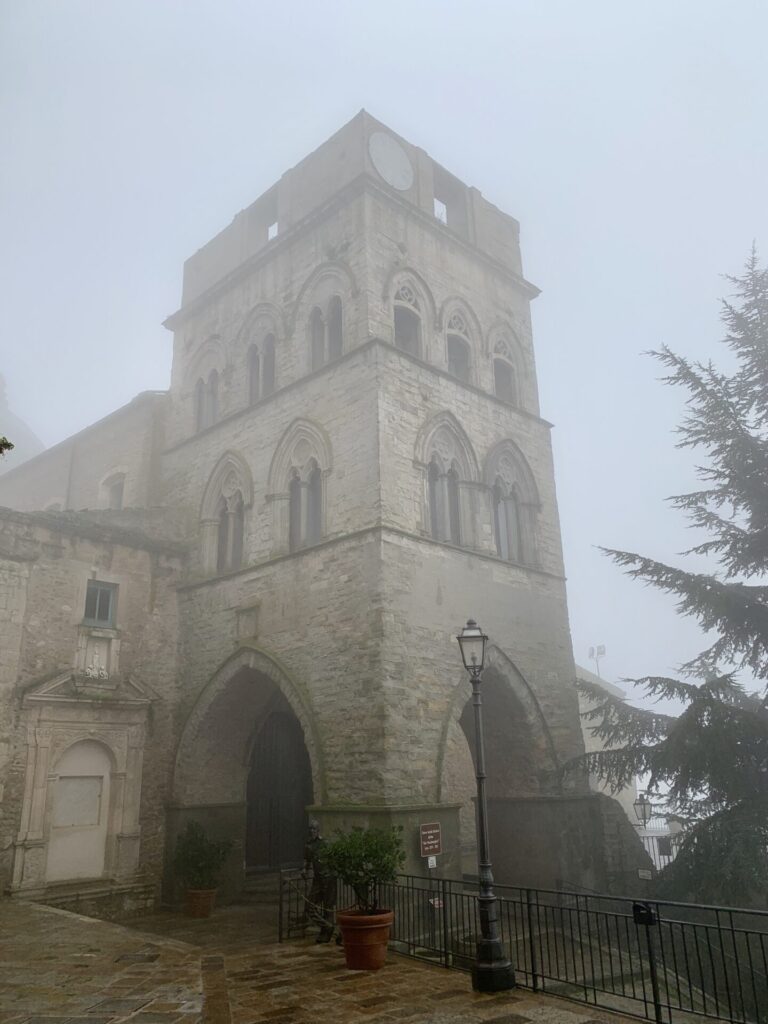
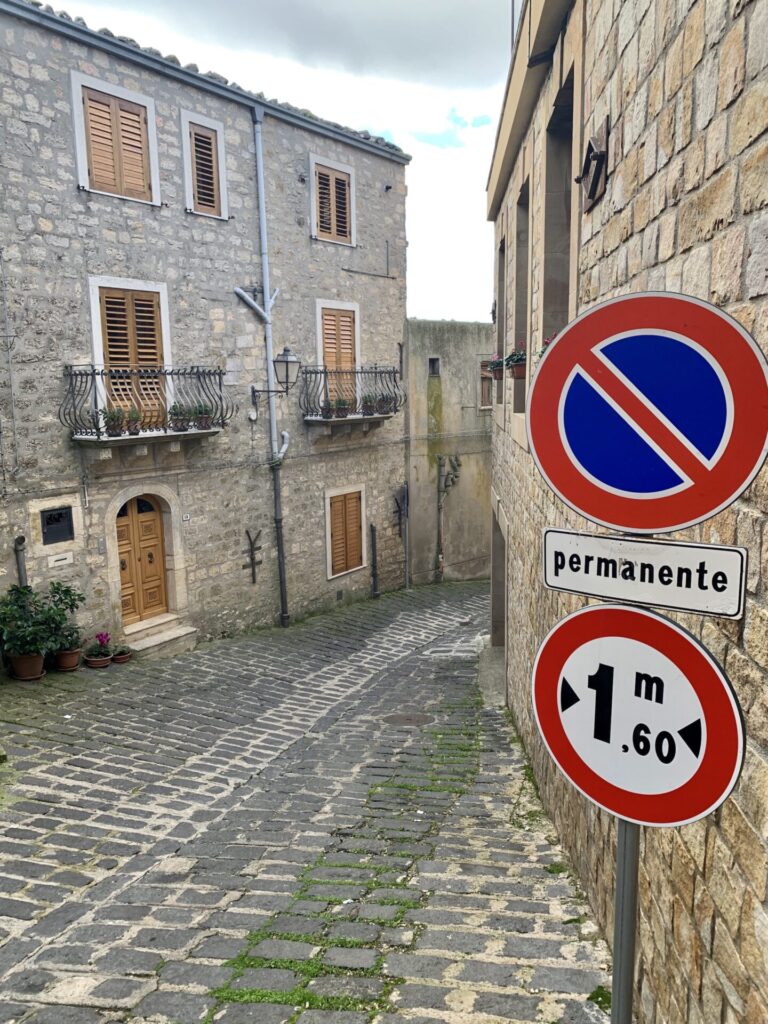
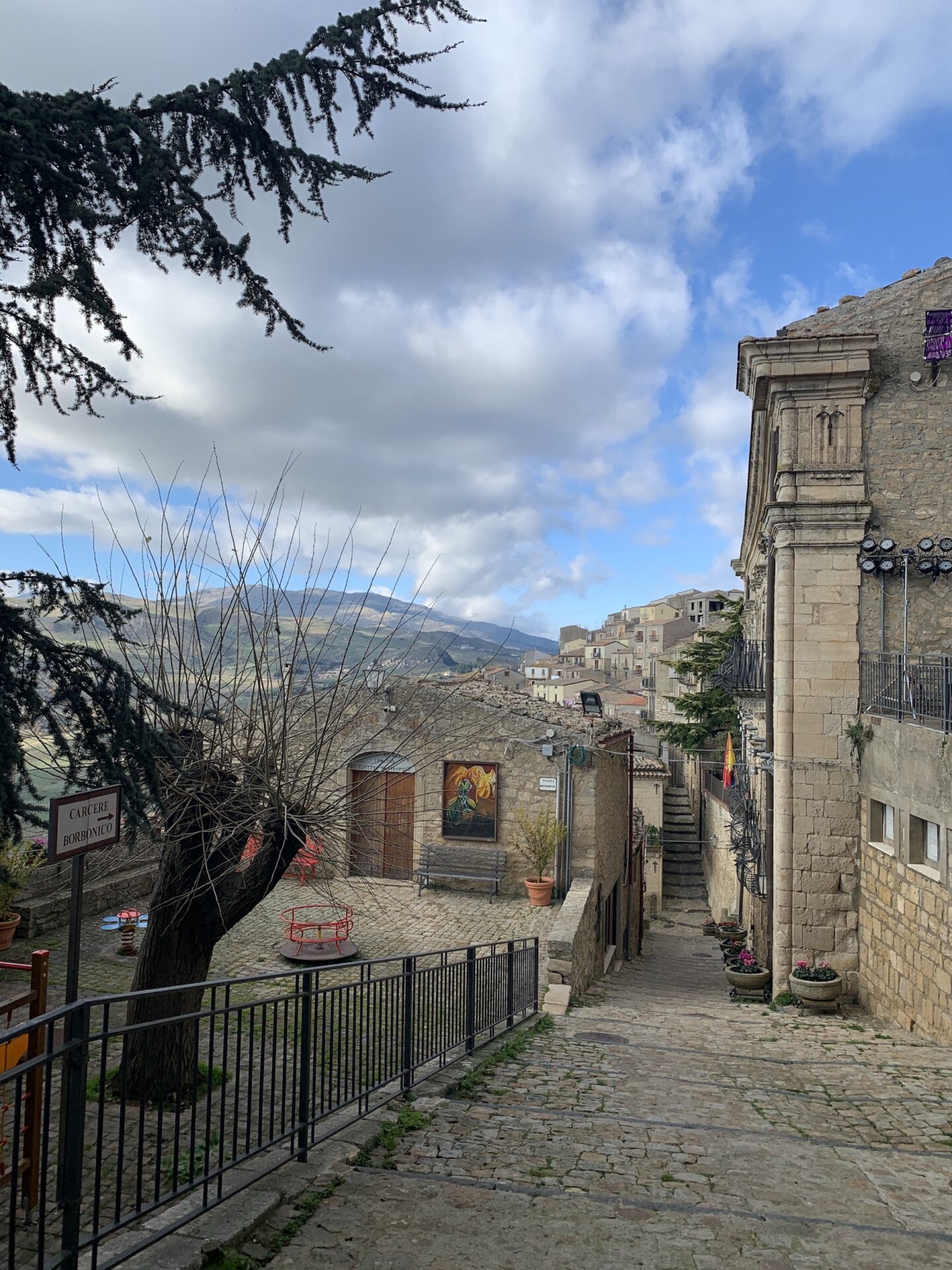
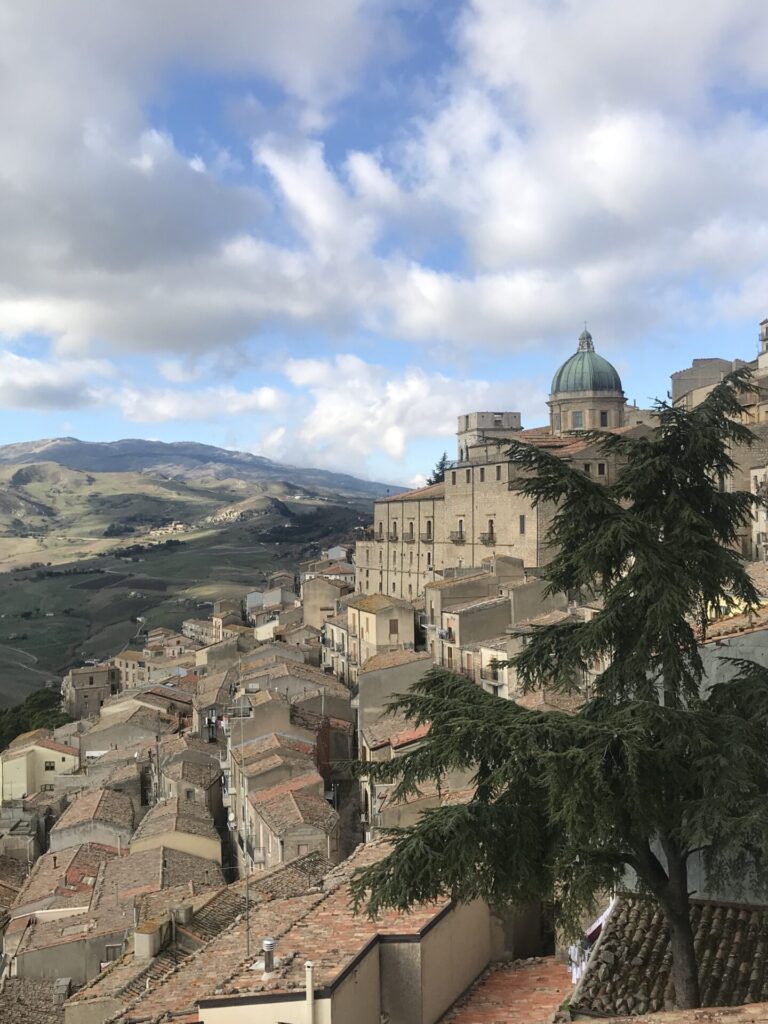
Polizzi Genorosa
Polizzi Genorosa is not only a beautiful little village 917m above sea level with a fantastic view, but has also produced some famous personalities, such as Martin Scorsese, the American actor Vincent Schiavelli and Domenico Dolce of Dolce & Gabana.
Petralia Soprana
Petralia Soprana is the highest village in the Madonie Mountains. From up here you have a remarkable view, as you are partly above the clouds. A visit is also worthwhile because of the beautiful cathedral.
Here there is one of the largest salt deposits in Europe. In a 1200m high mountain there is a salt plate with almost 40km of seams and tunnels. The salt mined here is of particularly high quality. The salt mine can be visited by prior appointment with the municipality.
On the last Sunday in August, the 'Salt Festival' is celebrated. Shortly before that, on August 15, 'The Wedding of the Barons' takes place. The wedding customs of the nobility in the 18th century are depicted. Splendidly dressed ladies, together with their cavaliers, parade on horseback through the narrow cobblestone streets of the village.
Petralia Sottana
On the SP54 just before Petralia Sottana there is an adventure park with a climbing garden including archery and mountain biking. You can spend the night in tree houses or hanging tents. More information is available here: https://www.parcoavventuramadonie.it
Geraci Siculo
Geraci Siculo is a small, picturesque village that has retained much of its originality. A stroll through the narrow streets is worthwhile. One of these narrow streets ends in the Salto dei Ventimiglia, a glass exit from which you have a wonderful panoramic view. A little challenge for people with fear of heights.
Sclafani Bagni
This small village is located so steeply on a mountain that this unique location already makes it special. Since its origins date back to the Middle Ages, the streets are so narrow that it is better to park outside and explore the village on foot. Besides a town gate, there is a belvedere where you can enjoy the breathtaking panorama. The spa, to which the village owes its name addition 'Bagni', is unfortunately quite dilapidated. There is supposed to be still a hot spring there, which we unfortunately did not find.
Ski area in the Madonie
In Piano Battaglia there is a ski area with 4.5 km of slopes at 1845m altitude. When we were there, the ski lift was unfortunately closed. But there was another surprise for us here: a tame fox visited us. It is a very special moment when you open the sliding door of the bulli in the morning and there is a fox in front of you. You never forget that.



Wild tulips in the Madonie
We got a tip that wild tulips are blooming at the Santuario Madonna dell'Olio near Blufi right now in mid-March. We would like to have a look. And we are not disappointed. Already from a distance we see the huge red sea of blossoms. We know the tulip fields in Holland. But this is a completely different number. A beautiful red carpet of tulips. Simply fantastic. Here it is just sunny 17 degrees and we want to continue through the Madonie drive towards Cefalù. We choose our sleeping place at Piano Farina. If I tell you now that we woke up there in the morning snowed in, no one would believe us. Here man and nature still live in harmony according to the rules of nature. We were lucky, one or 2 degrees colder and our water tanks could have frozen and burst.
Culinary specialties
Not to be missed are the culinary specialties of the Madonie. I already mentioned manna, but you should also try dolci and almond wine. The Madonie is also famous for wild boar and wild mushrooms. The specialty of Castelbuono are the salami Buffa & Pappone.
And you should try the Provolla delle Madonie cheese. It goes perfectly with Nero d'Avola, the local red wine or literally translated the 'black from Avola'. We like to buy local wine here from the fruit and vegetable vendor, bottled in 1.5l plastic bottles. If you are lucky, you can taste it there beforehand.
Tips & Tricks
In Sicily there are many Picnic areas. These are equipped with tables & benches, but in many cases also with barbecue areas and some also with water. If you are very lucky, you can dispose of your trash.
A general map of these picnic areas is available here:
http://www.regione.sicilia.it/agricolturaeforeste/azforeste/areeattrezzate.asp

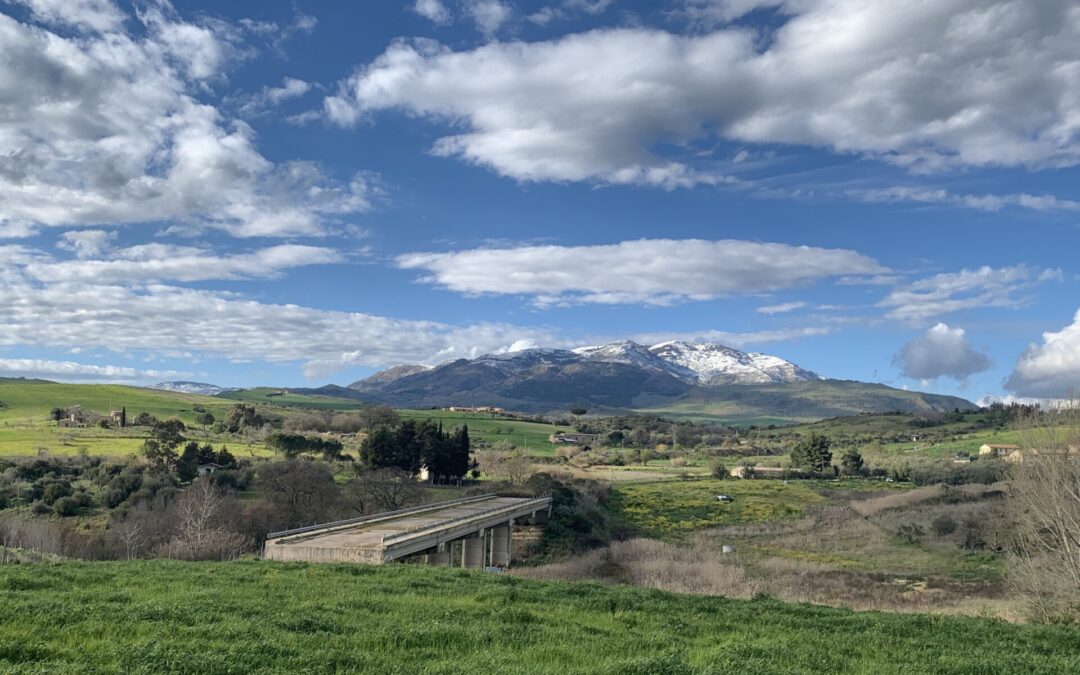
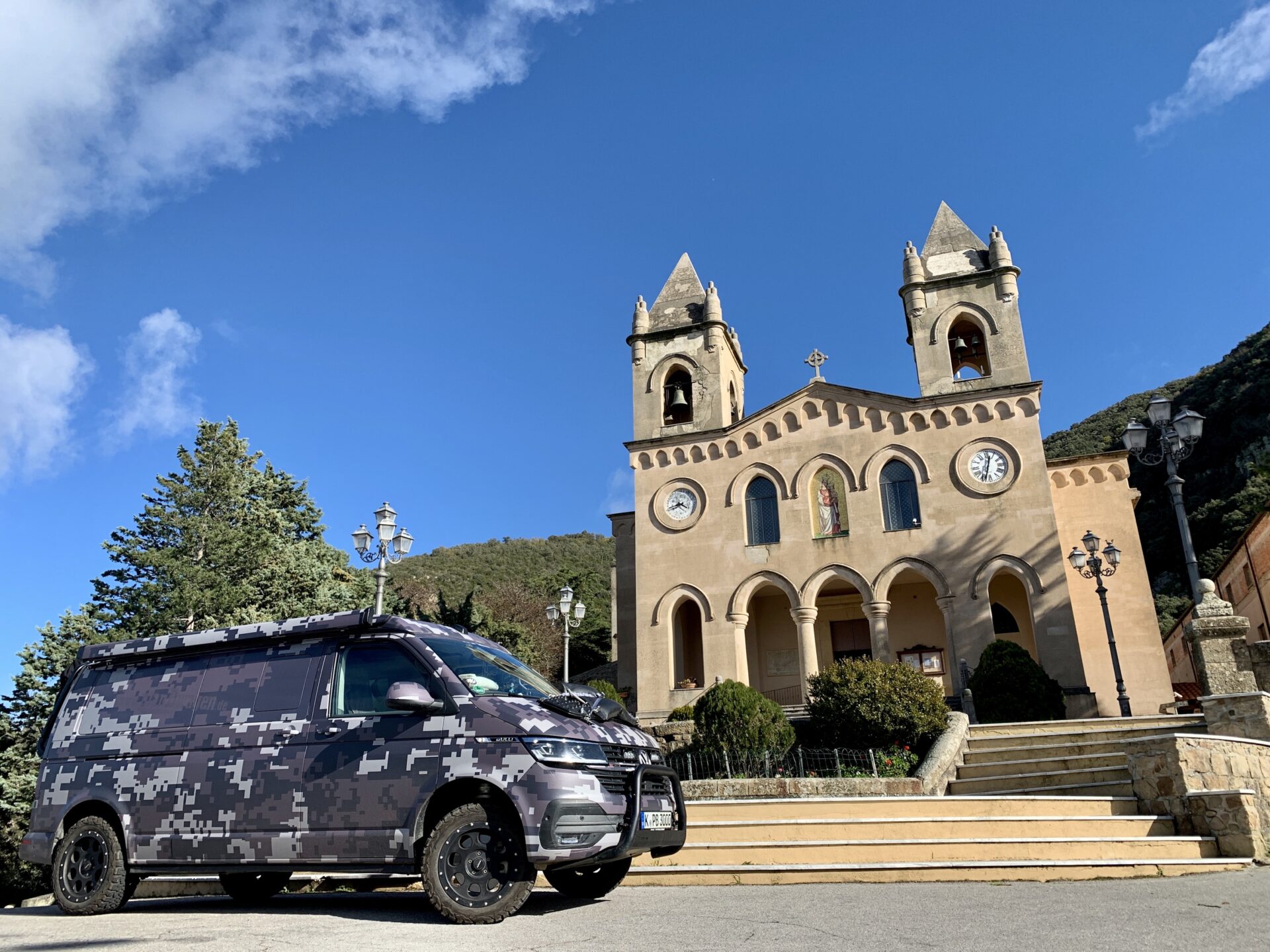
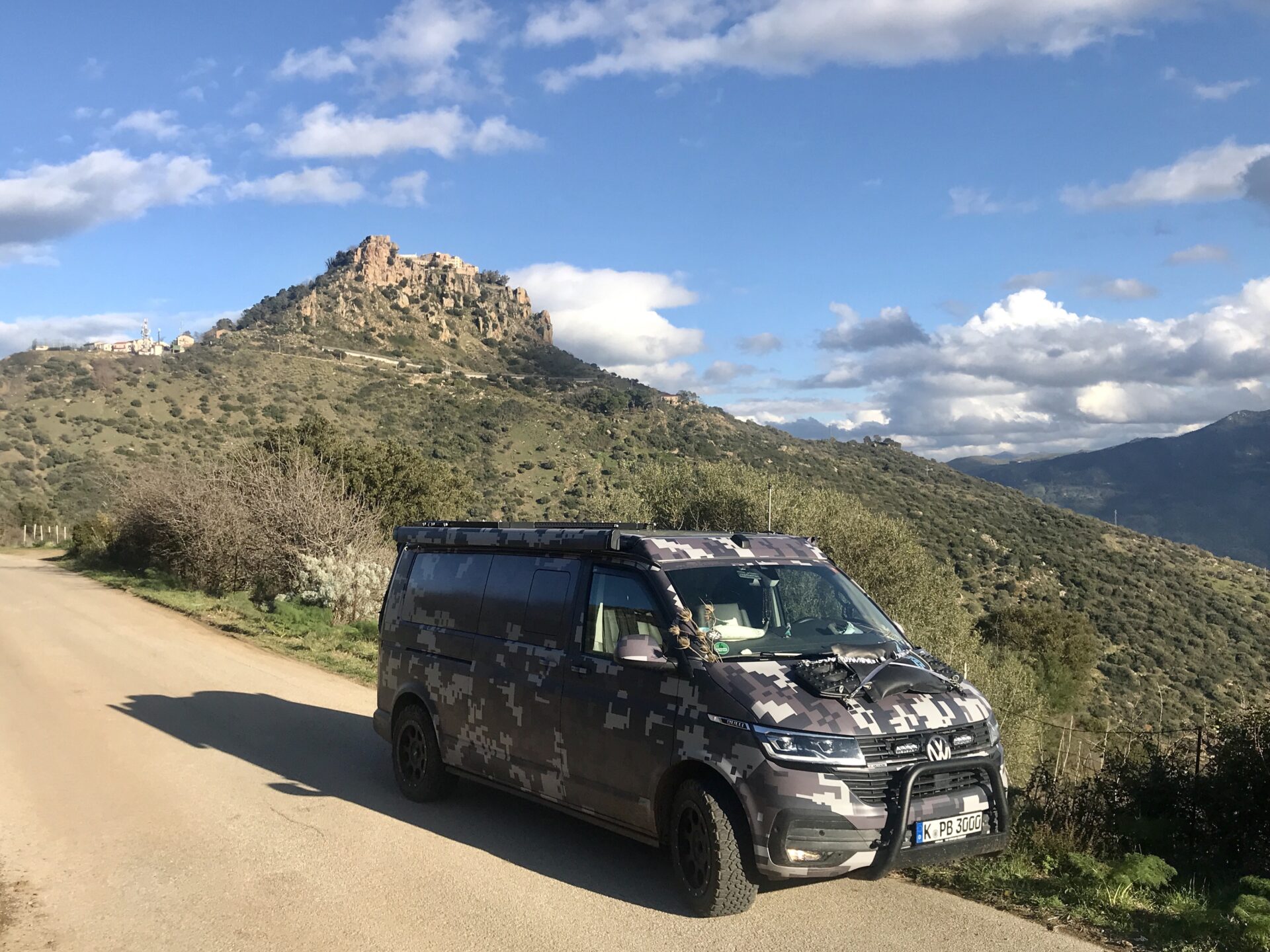
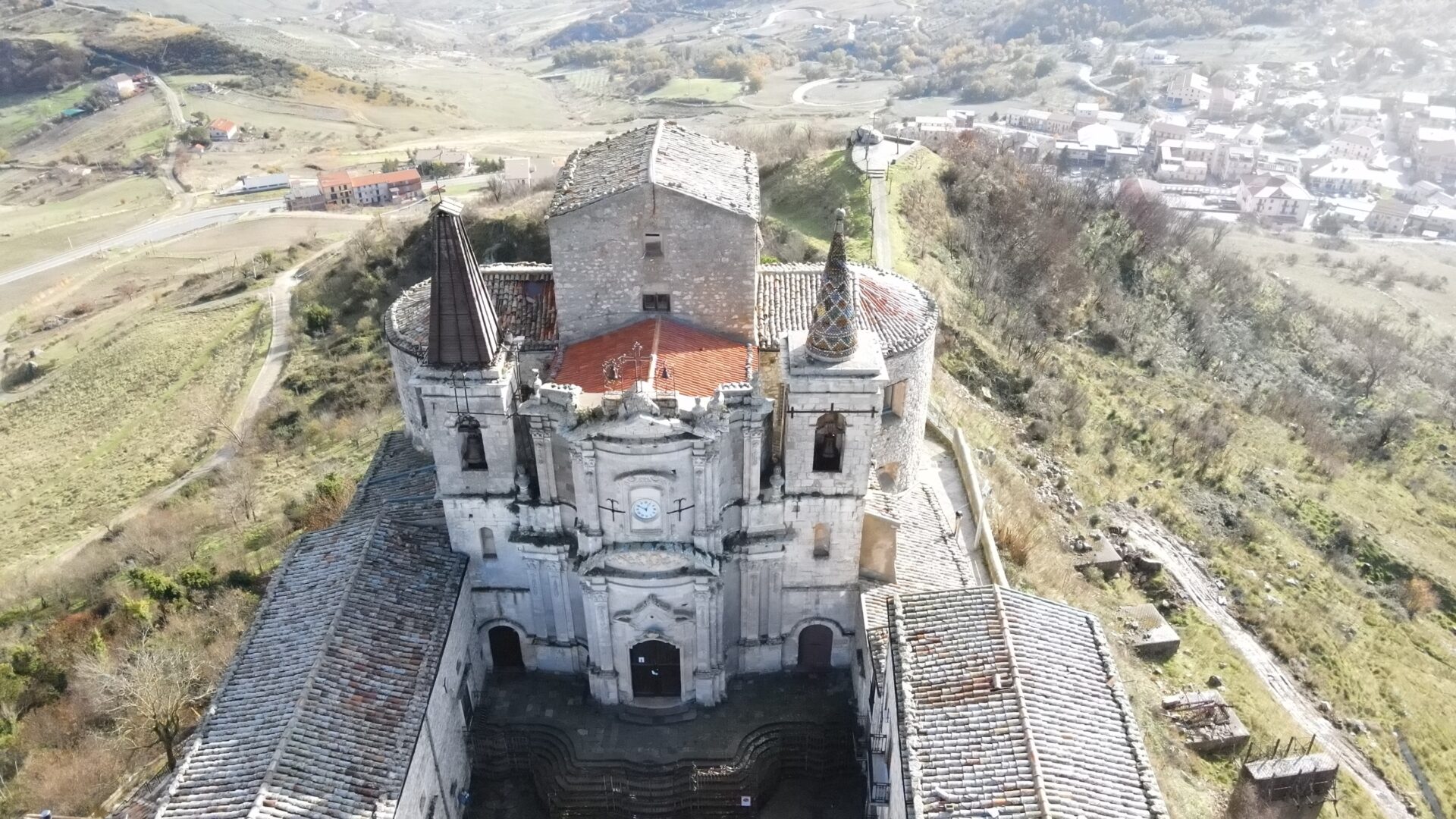
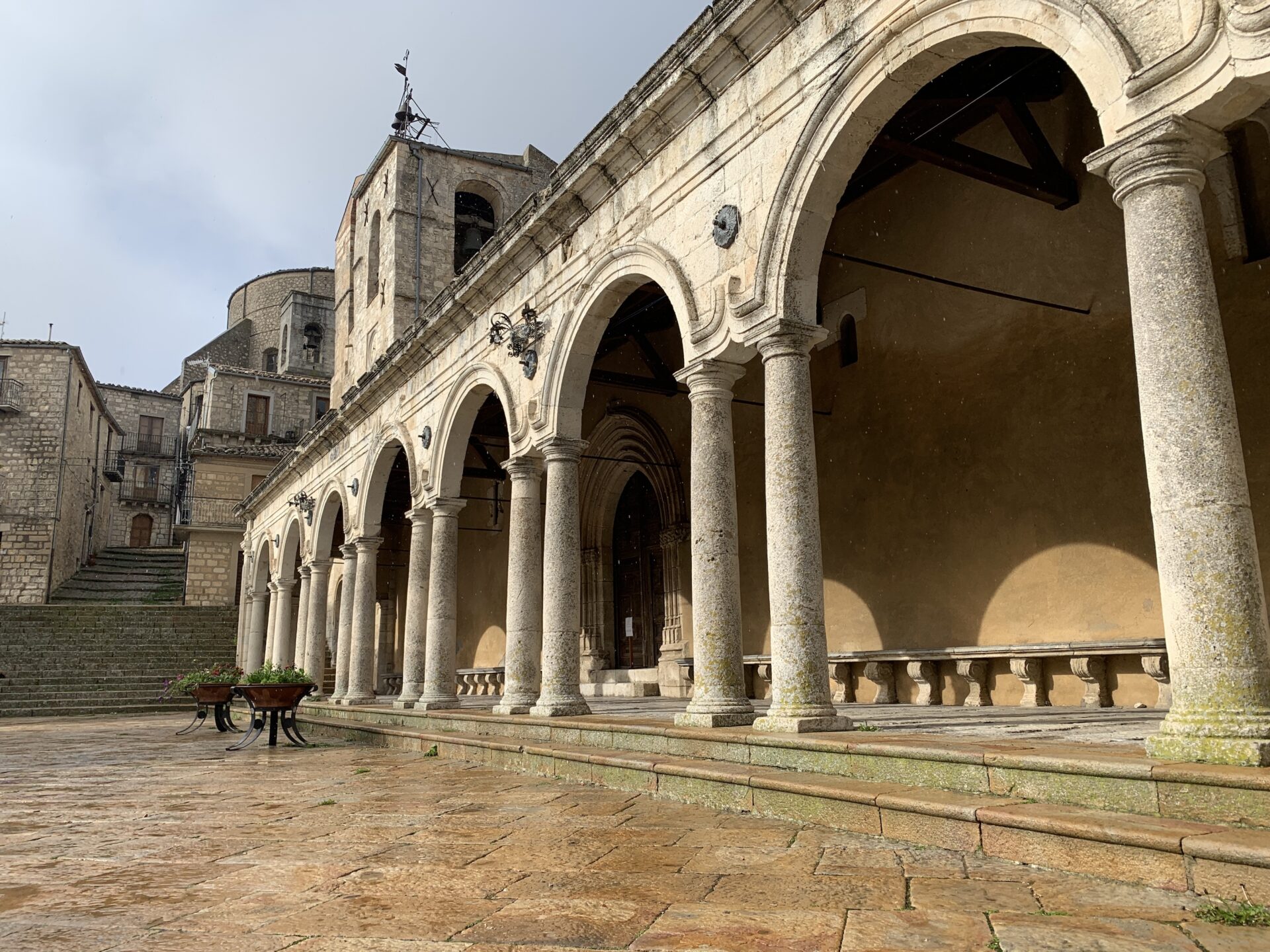
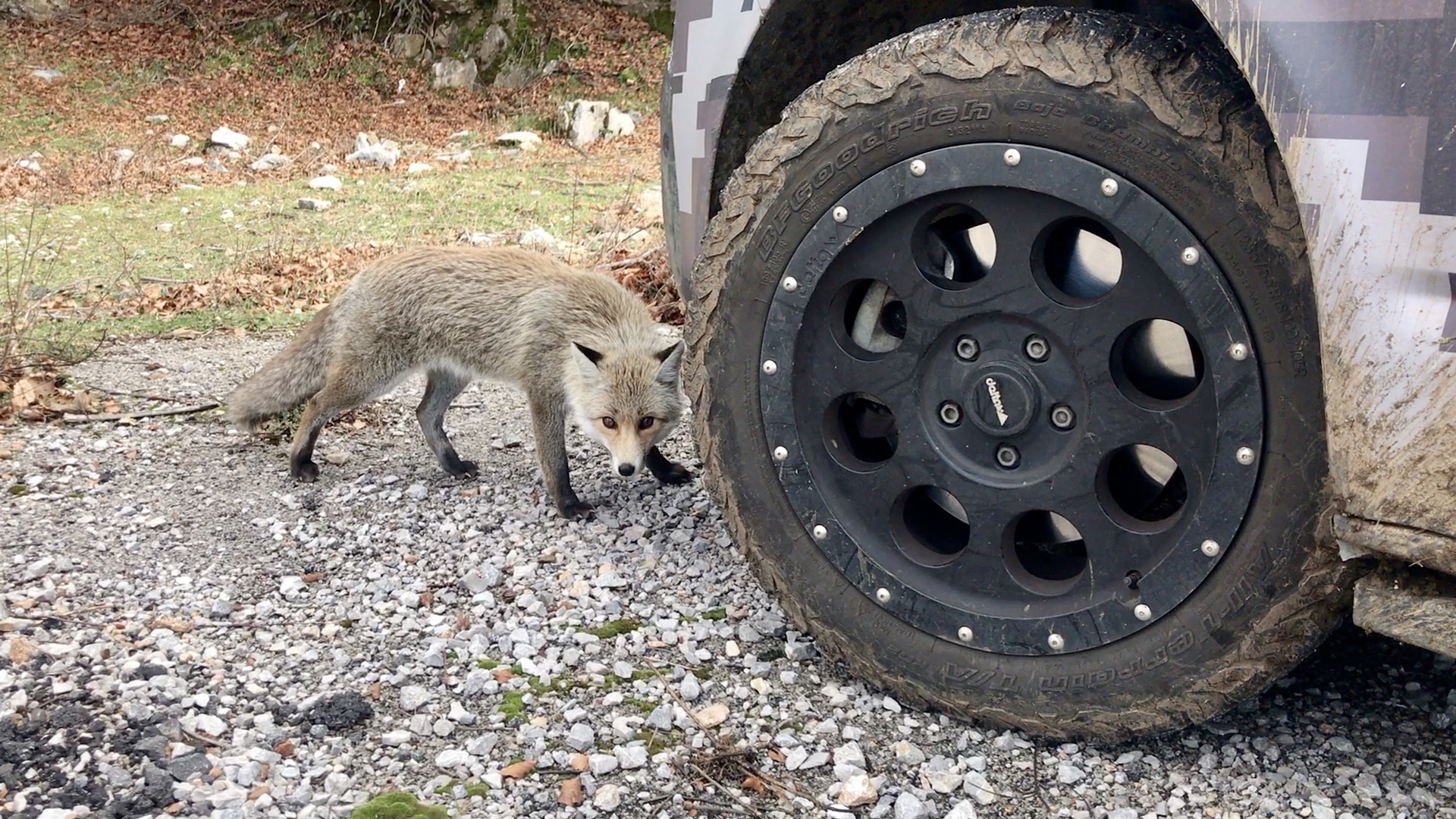
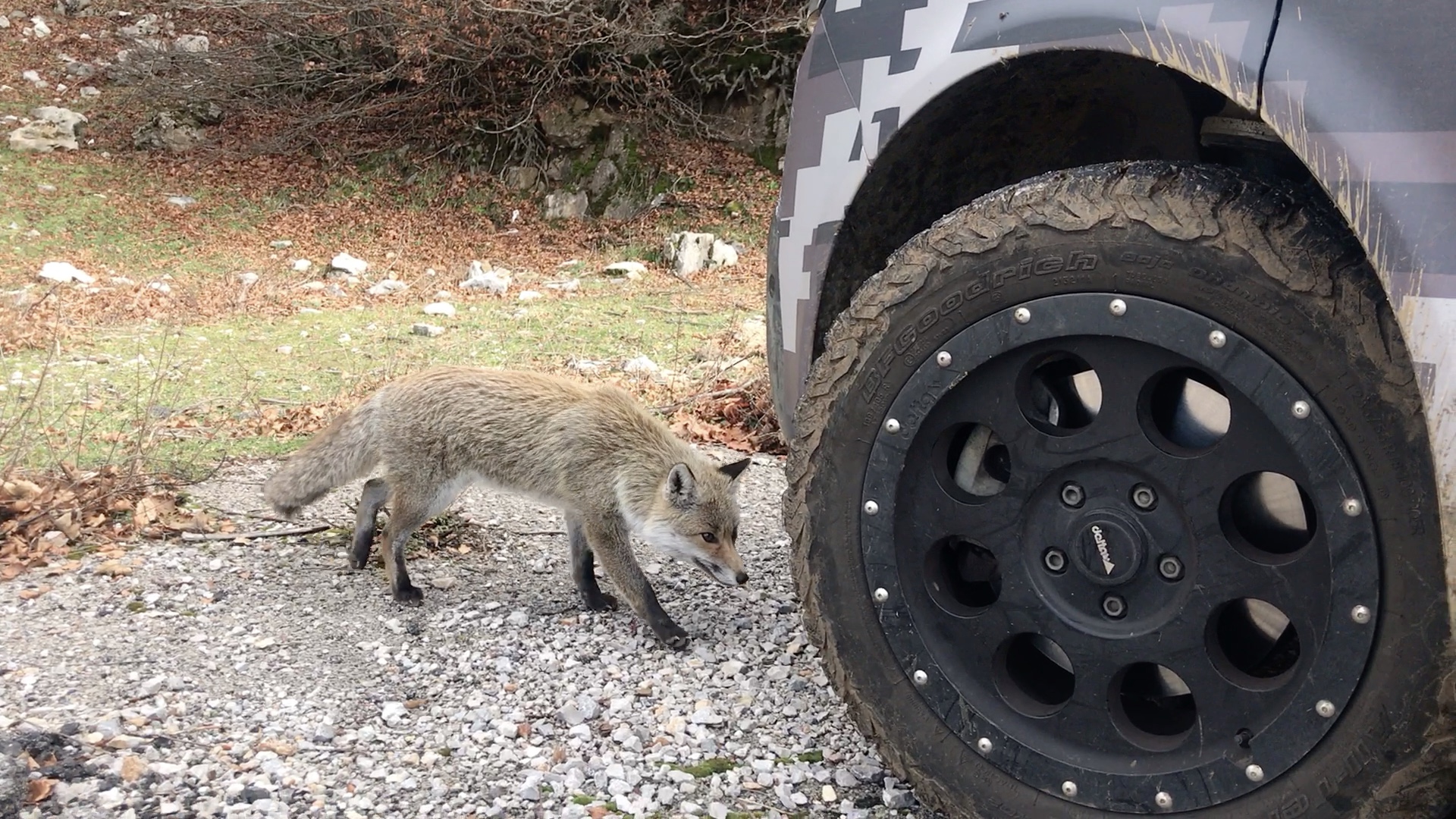
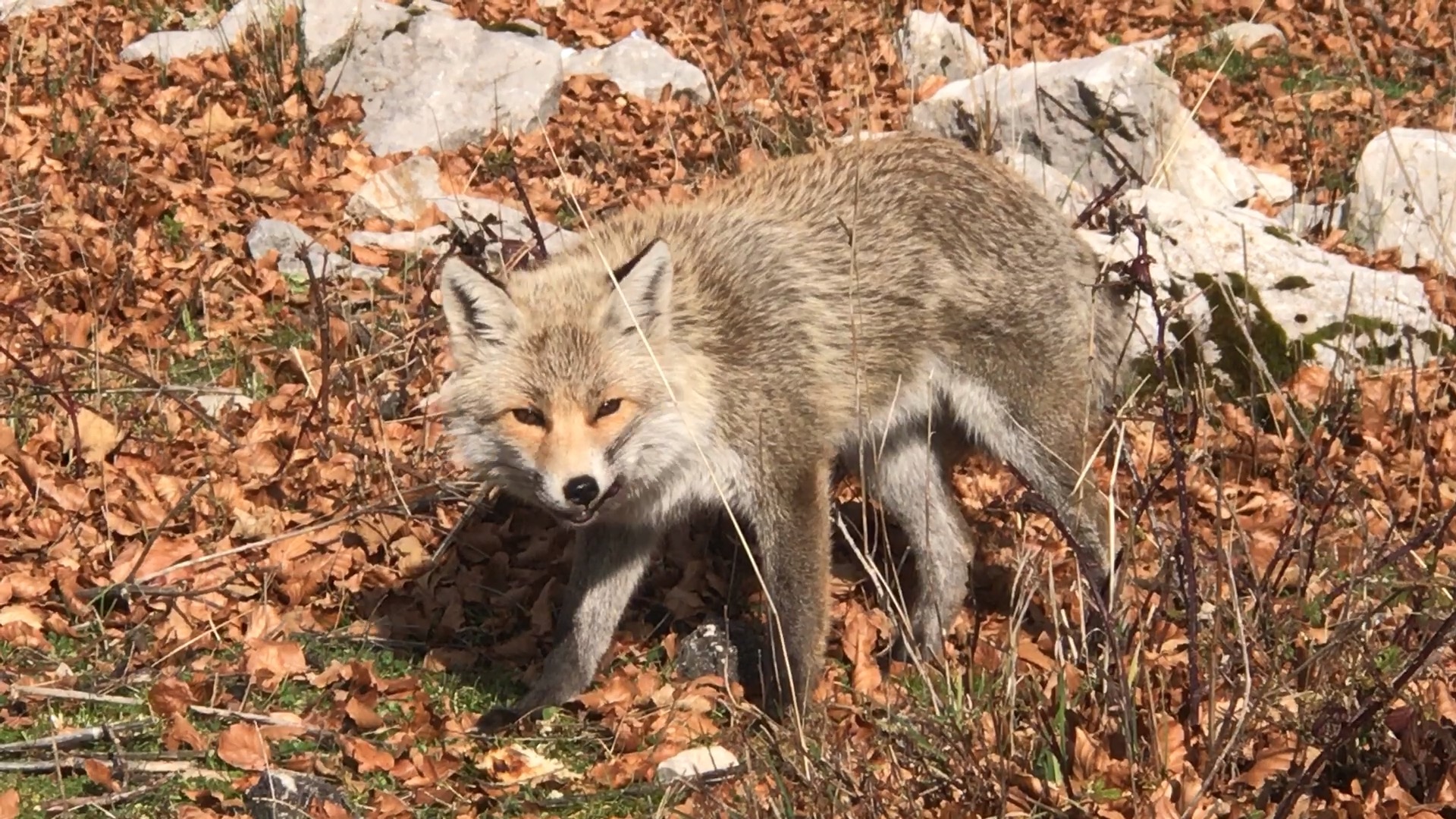

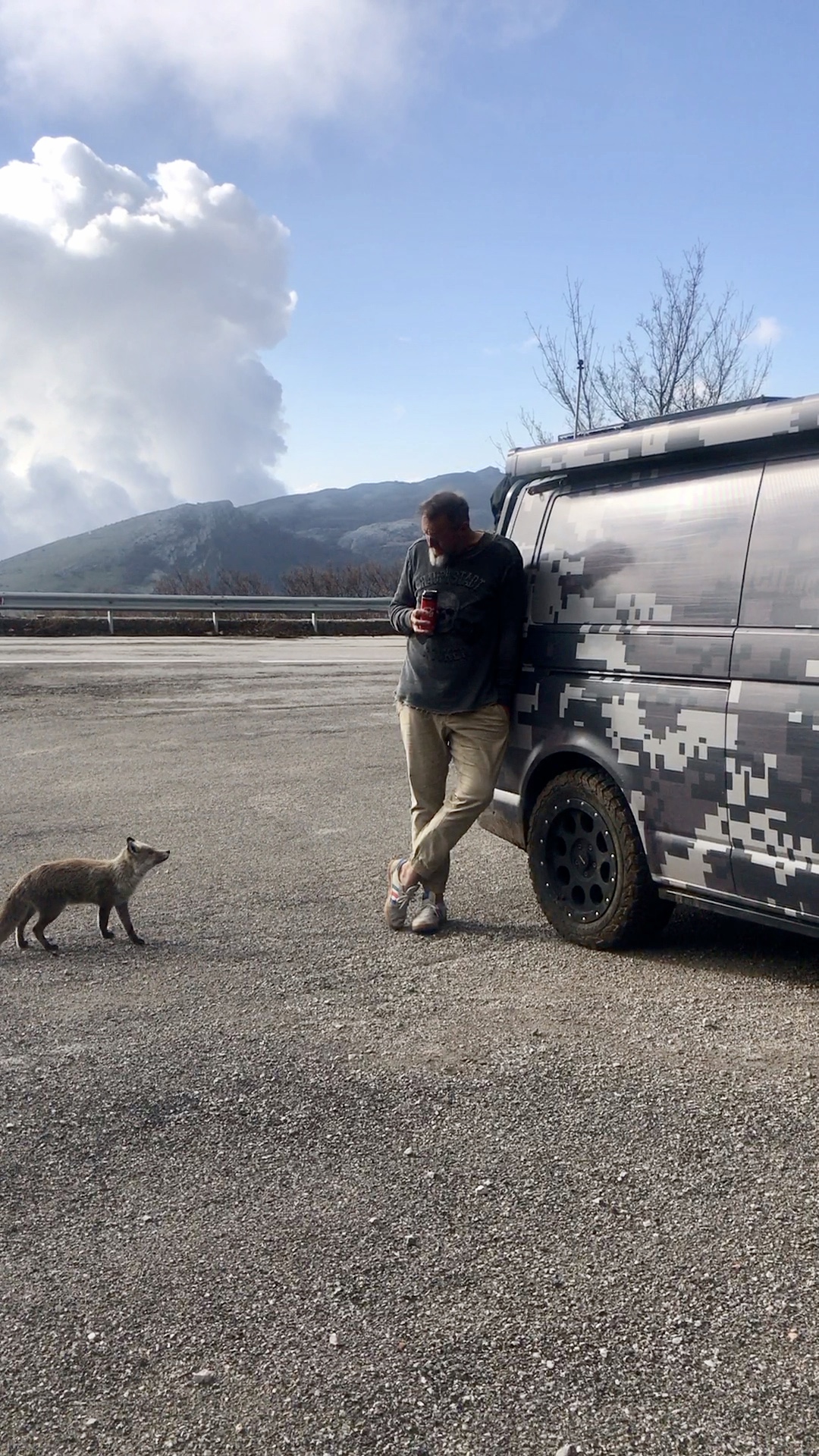
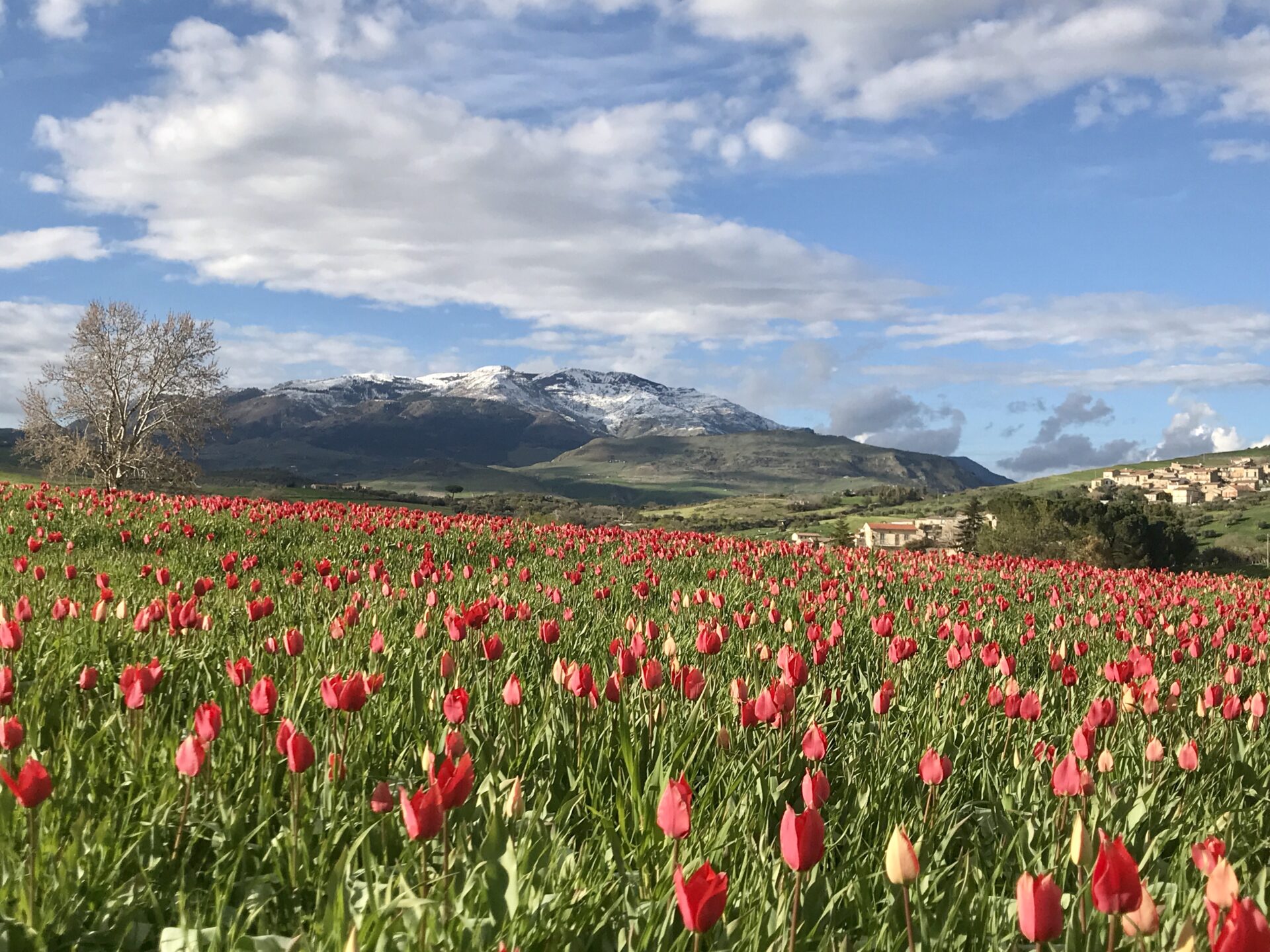
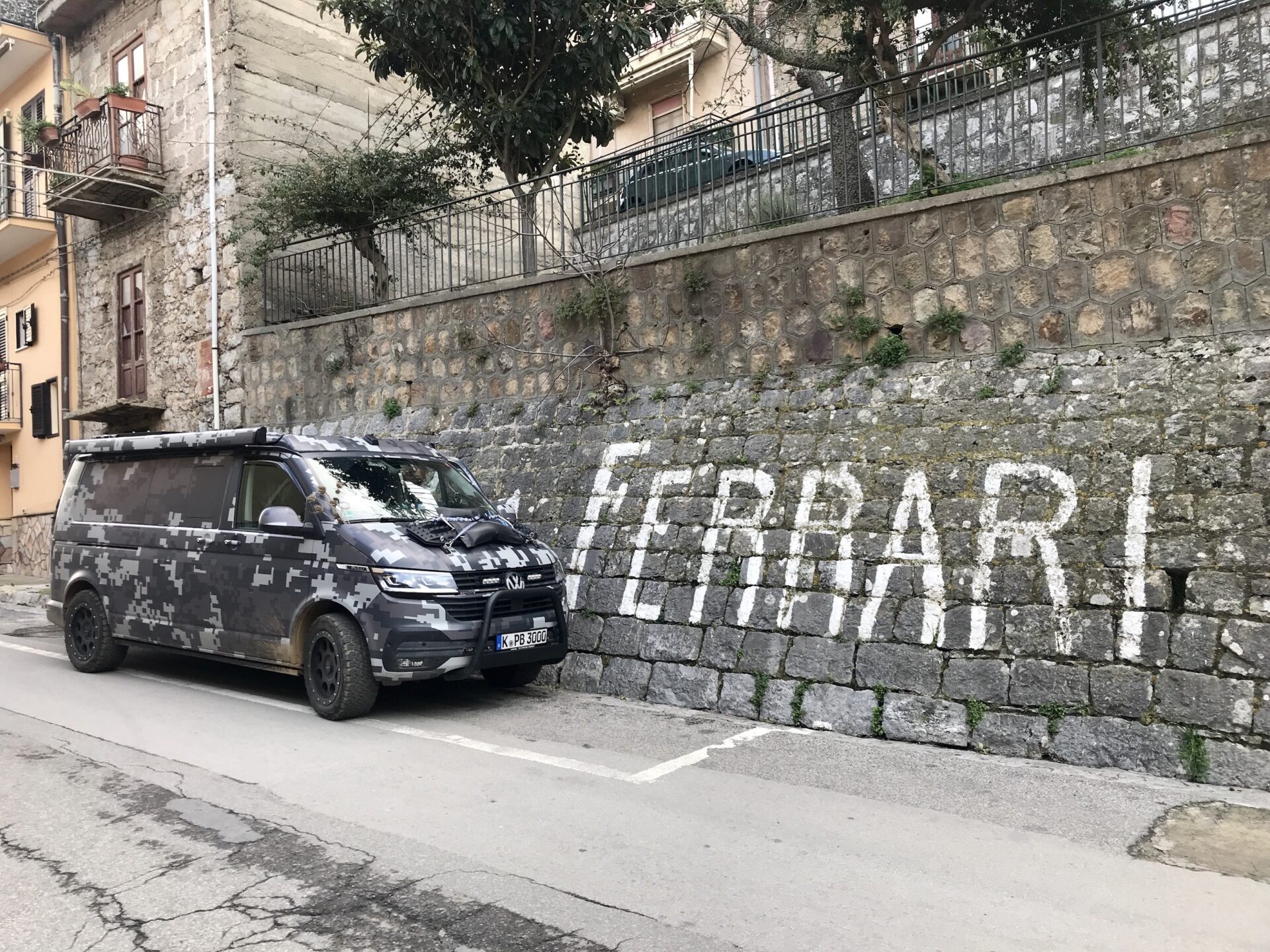
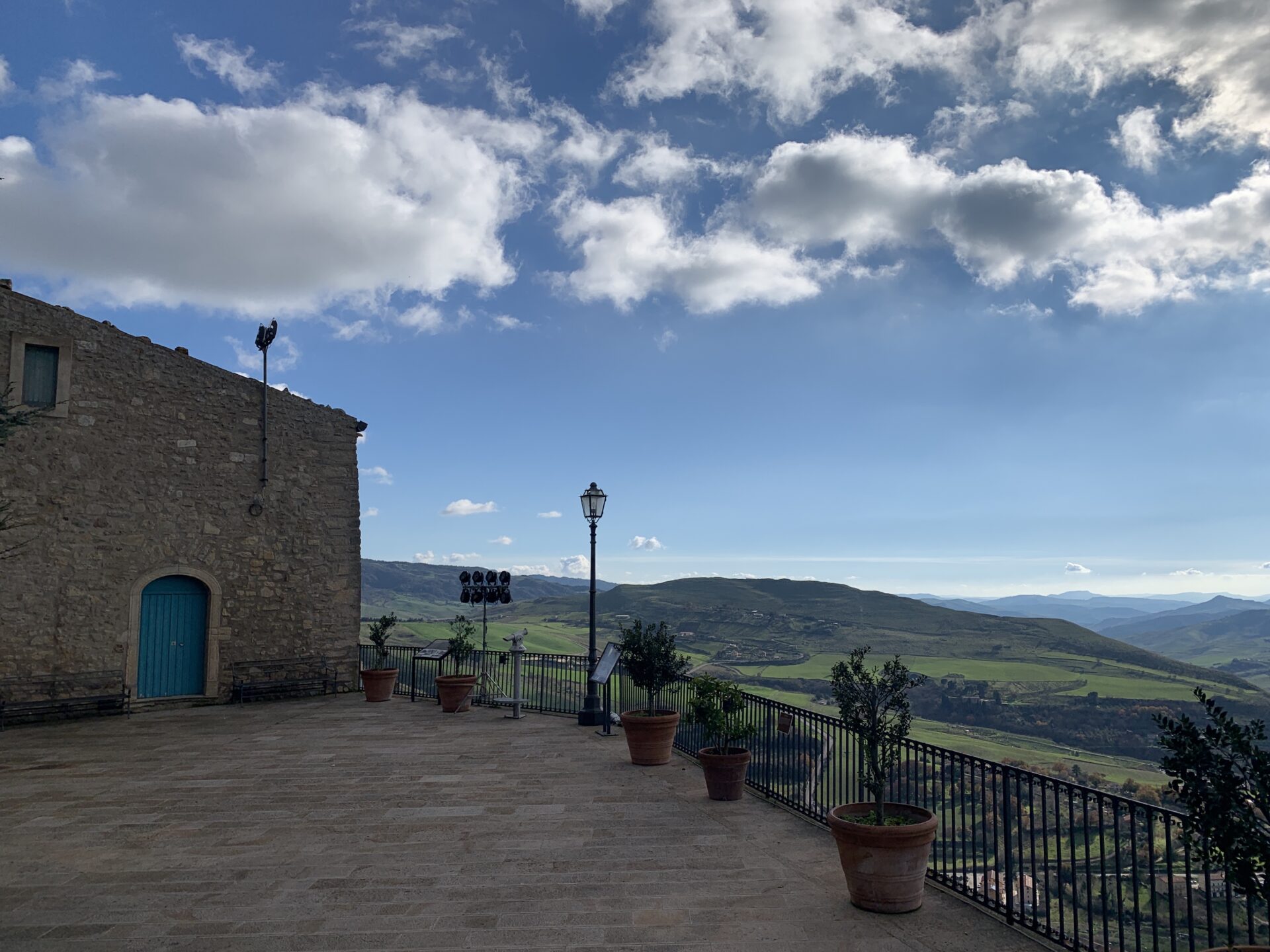
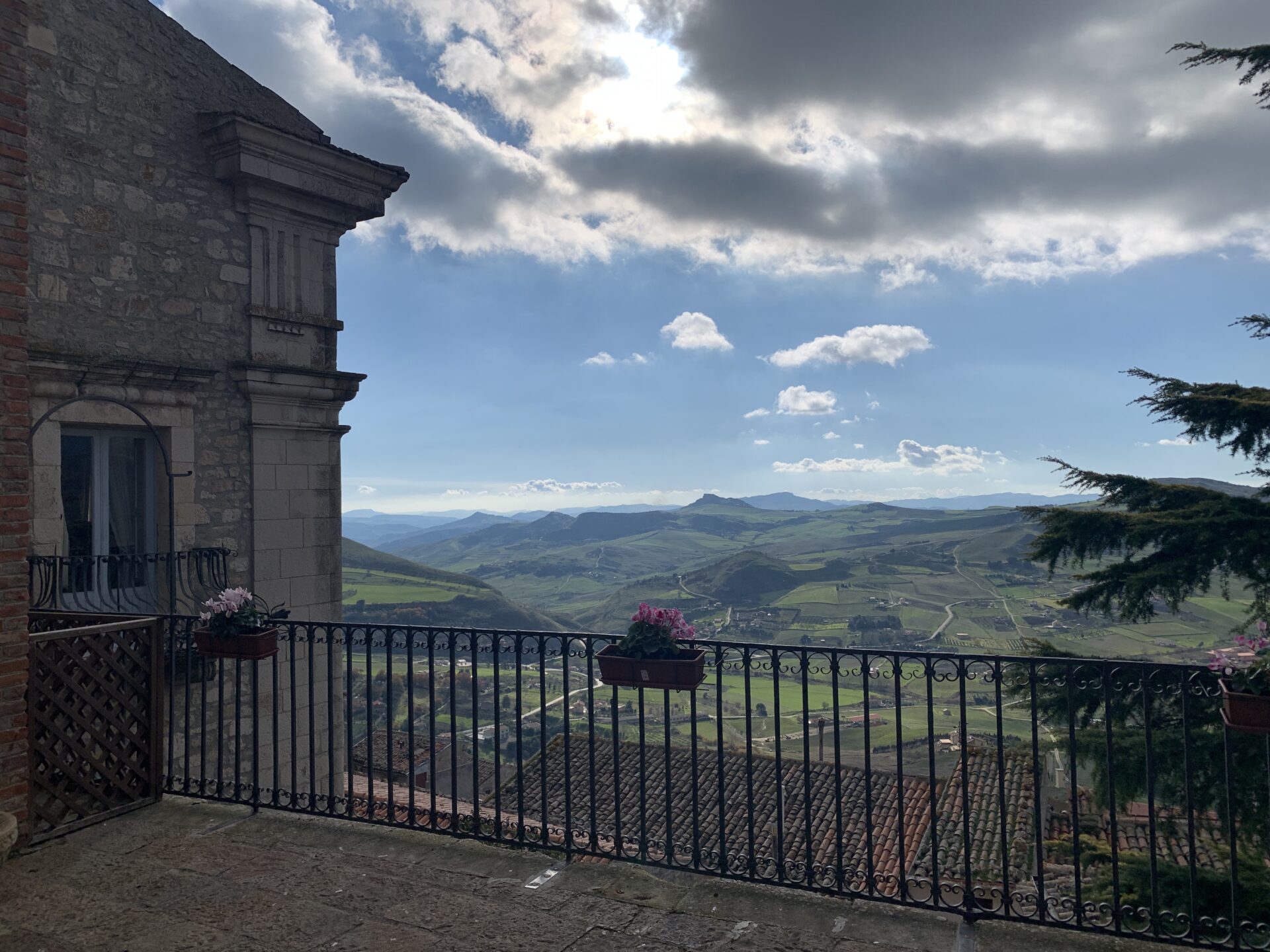
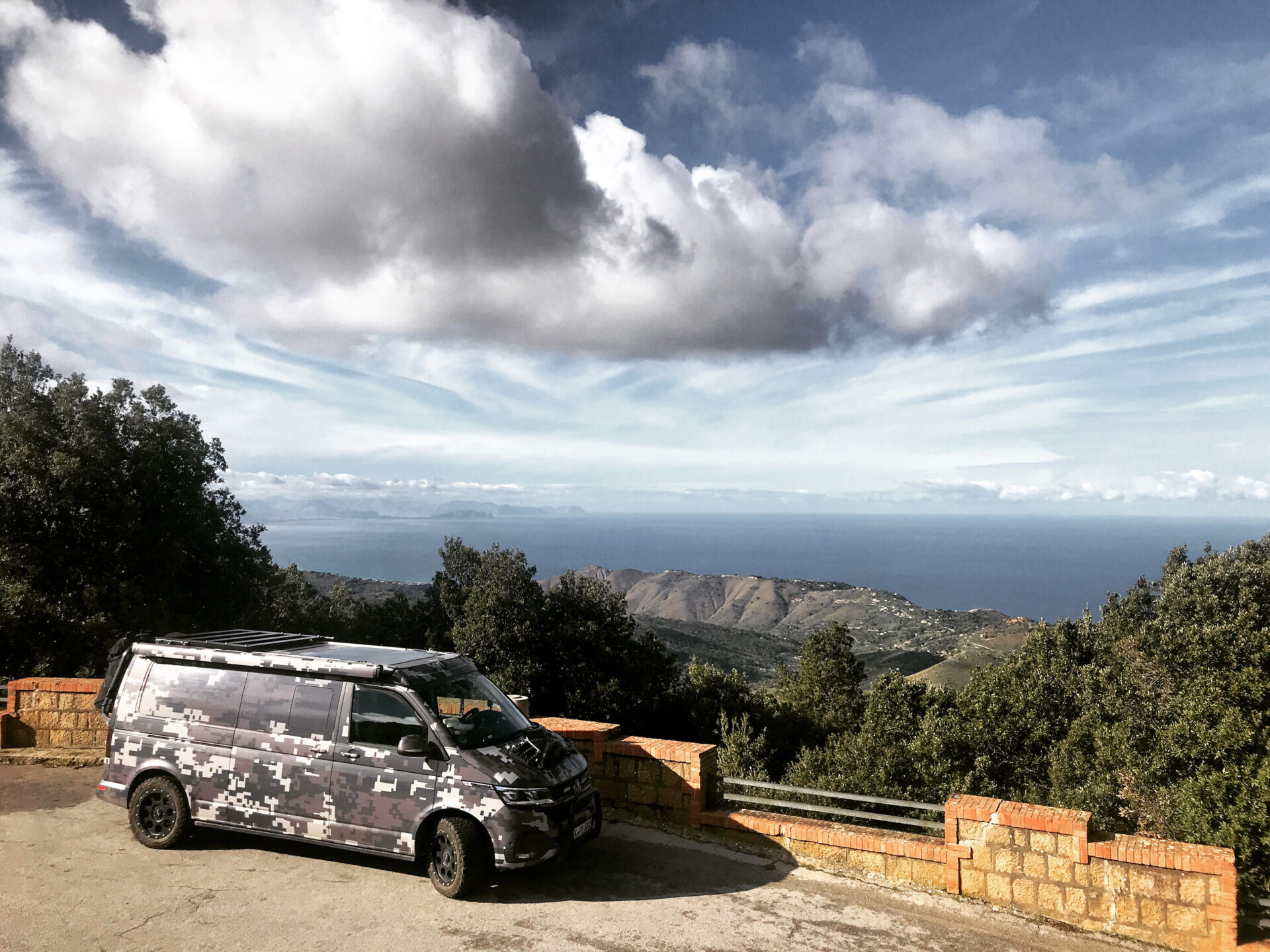




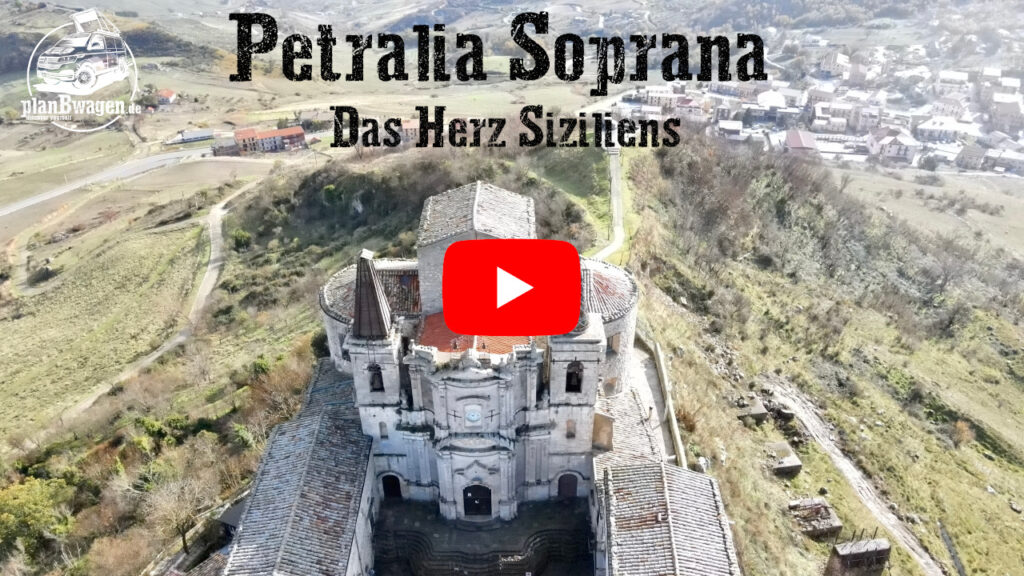
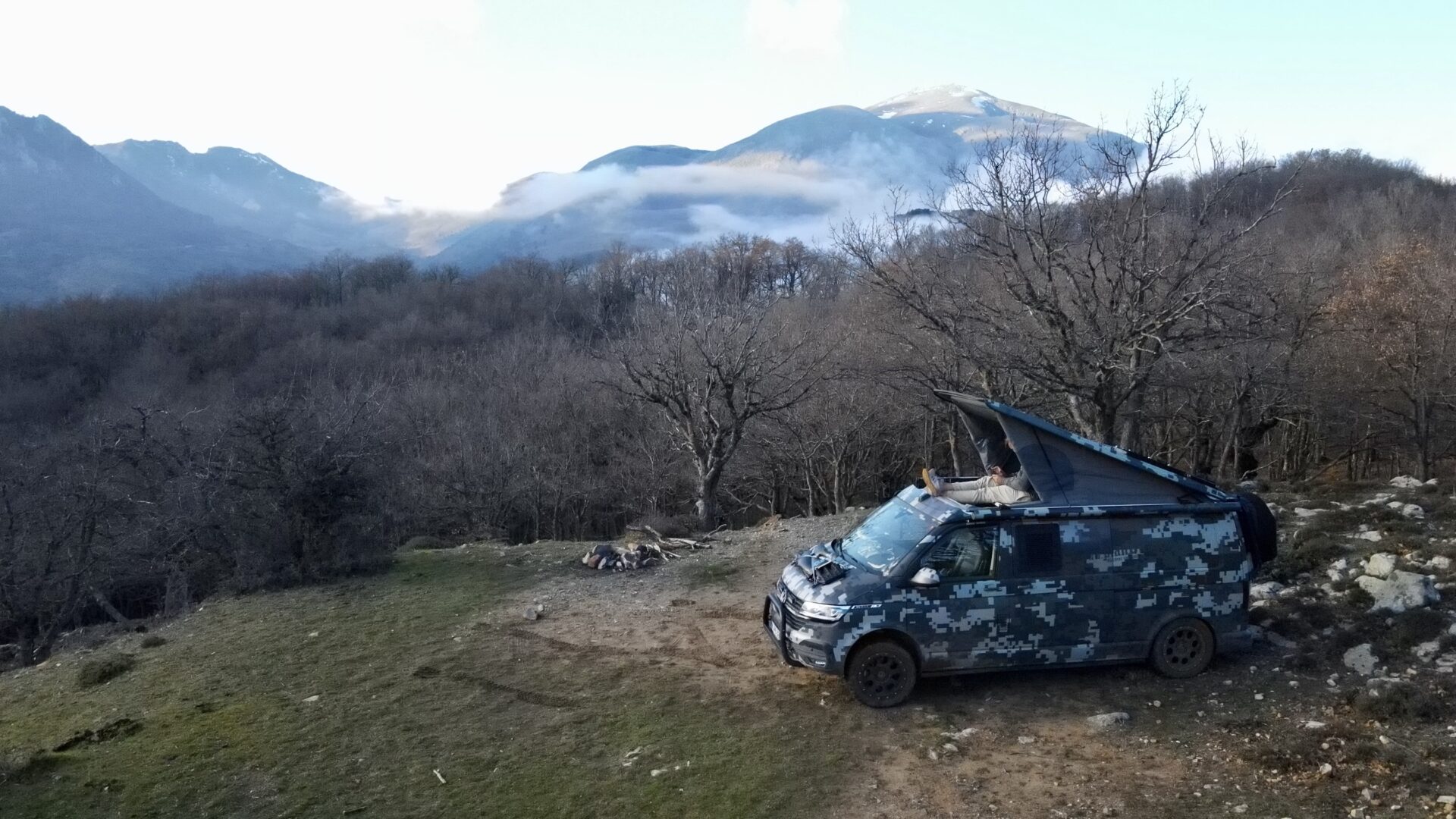


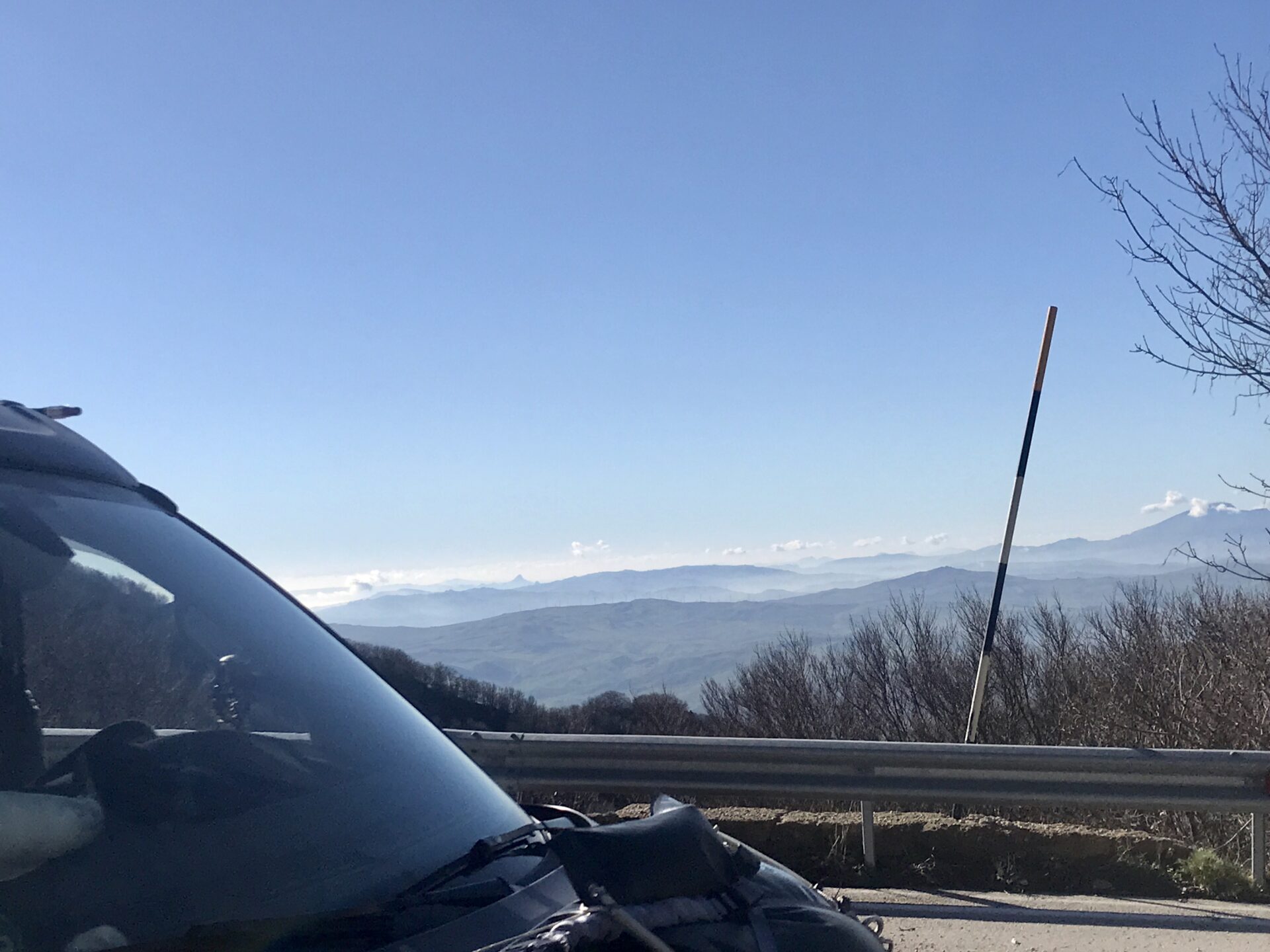
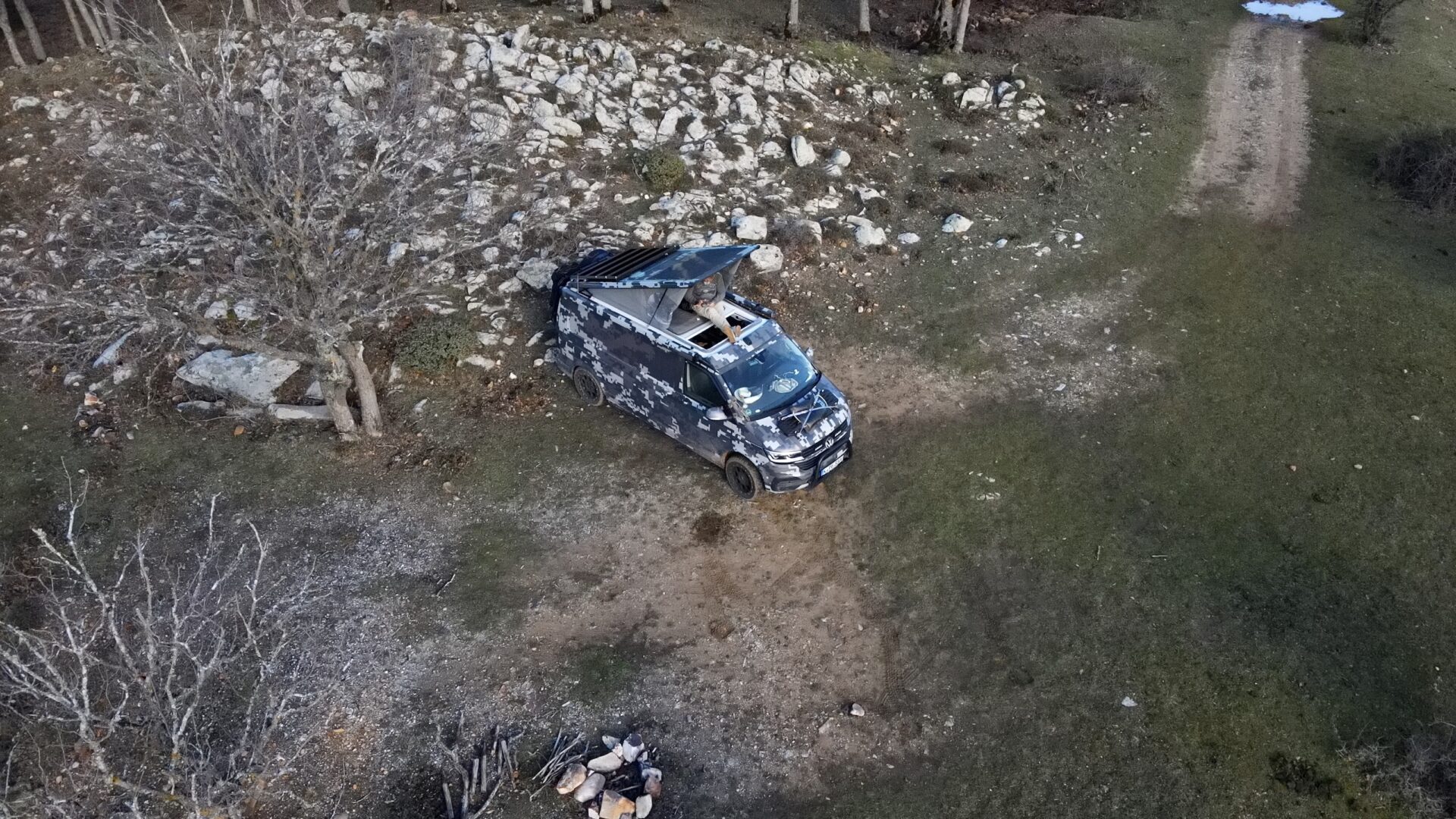


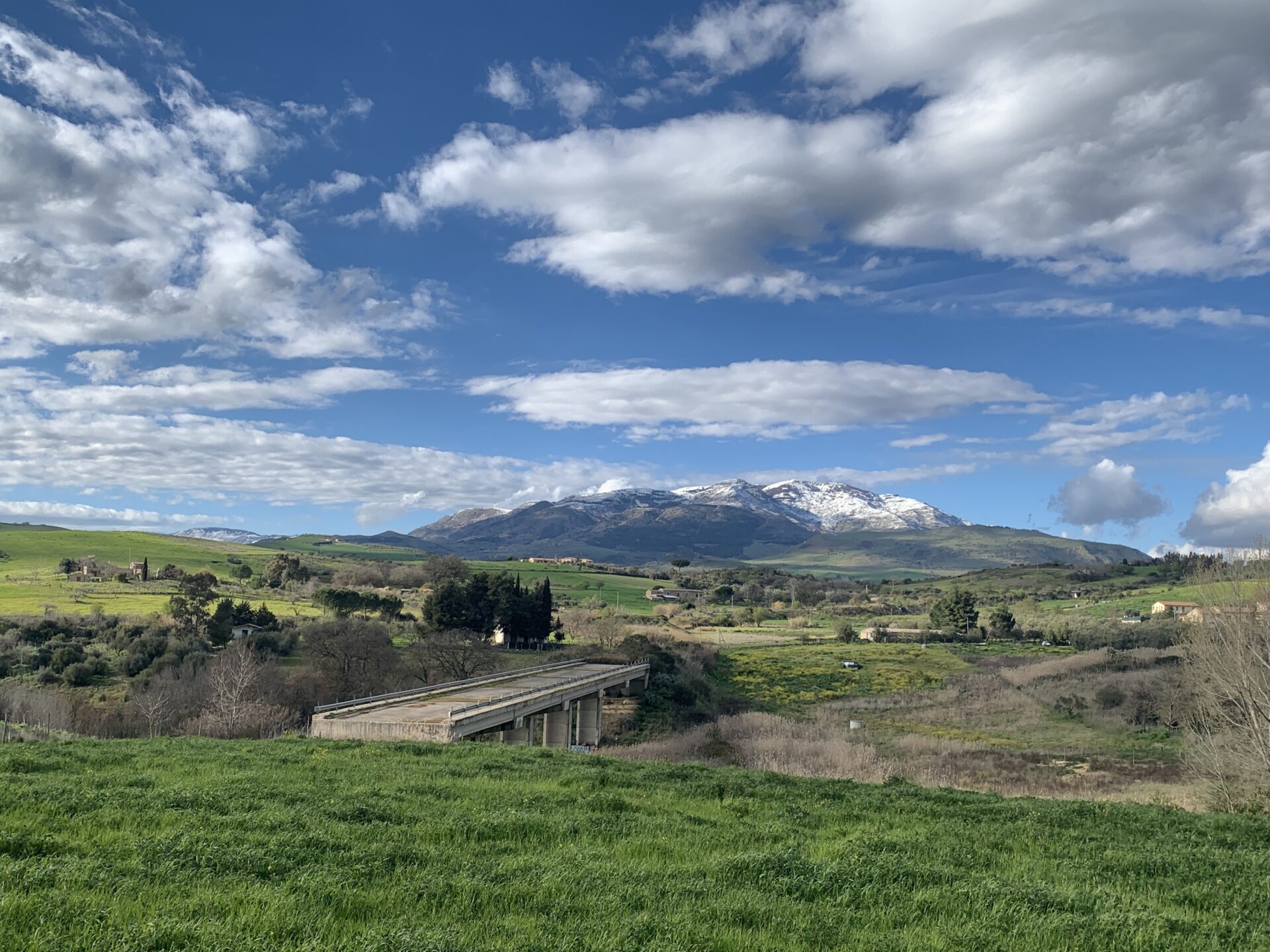
Thank you very much for this really informative travel report 👍 we are here unfortunately only unplanned from Trapani to catania through, as the airport there was closed. During the passage we have gedoch felt that is more here. Your contribution has supported this impressively. Thanks again for the effort